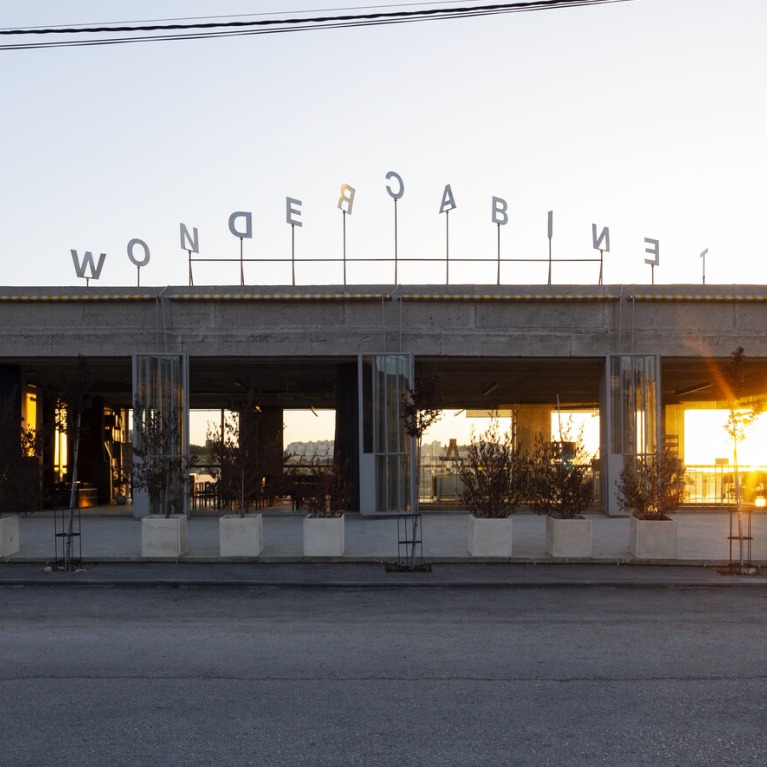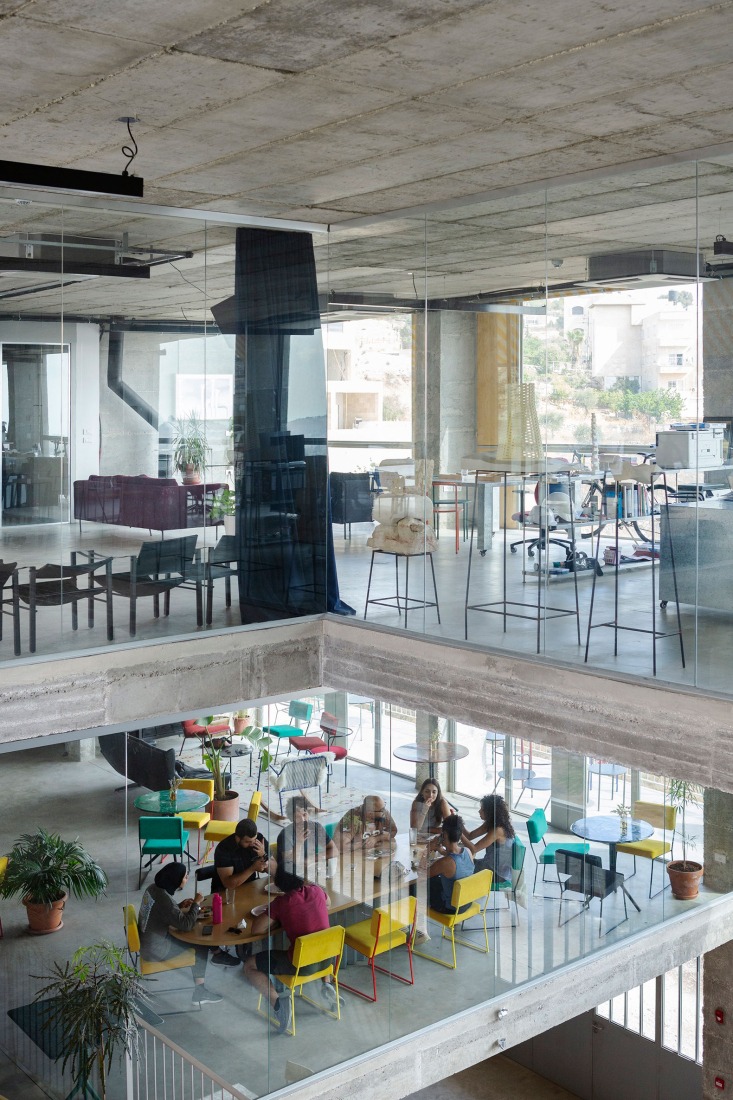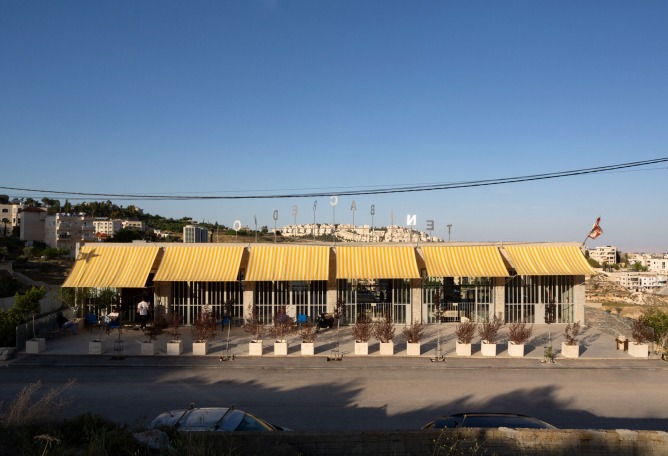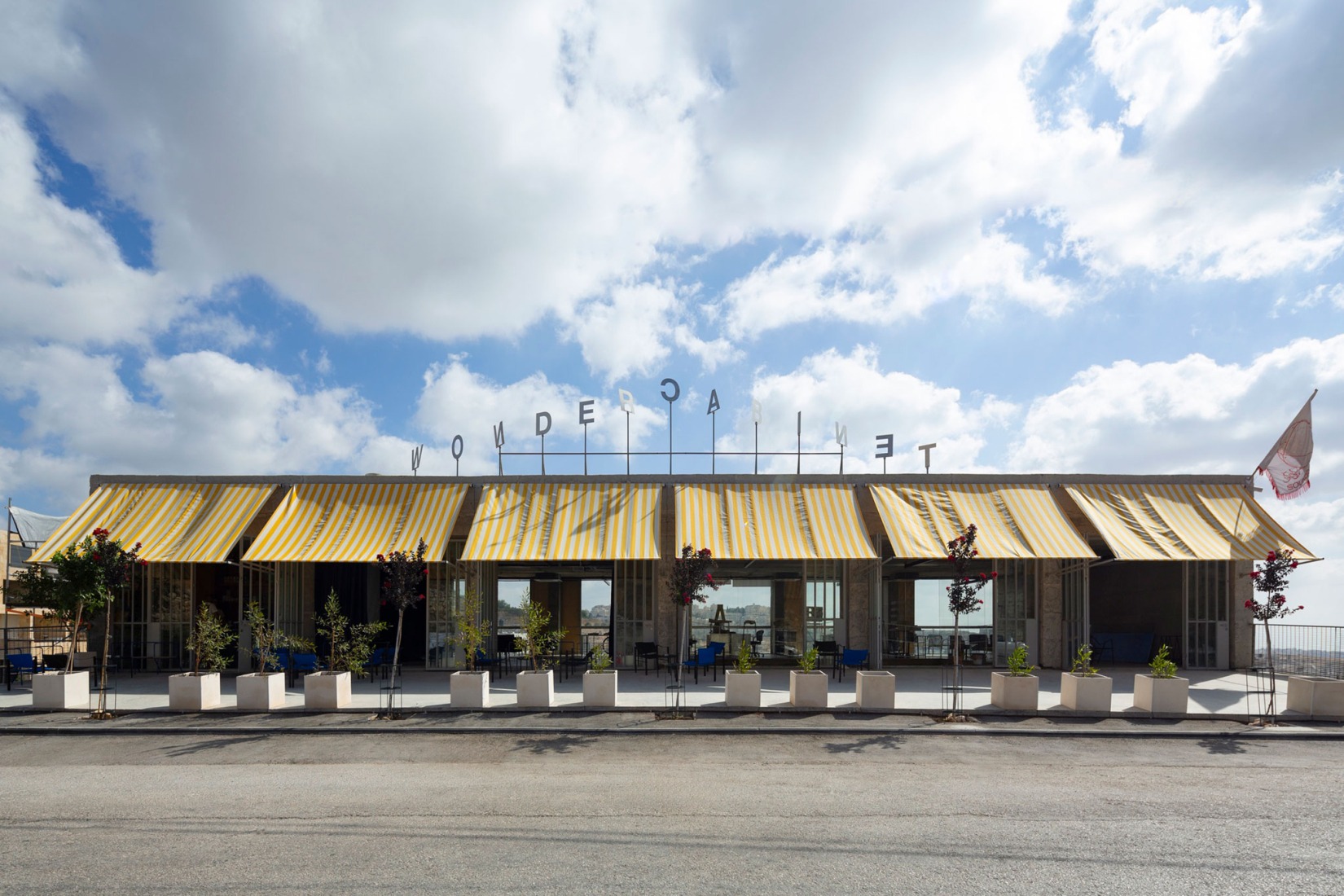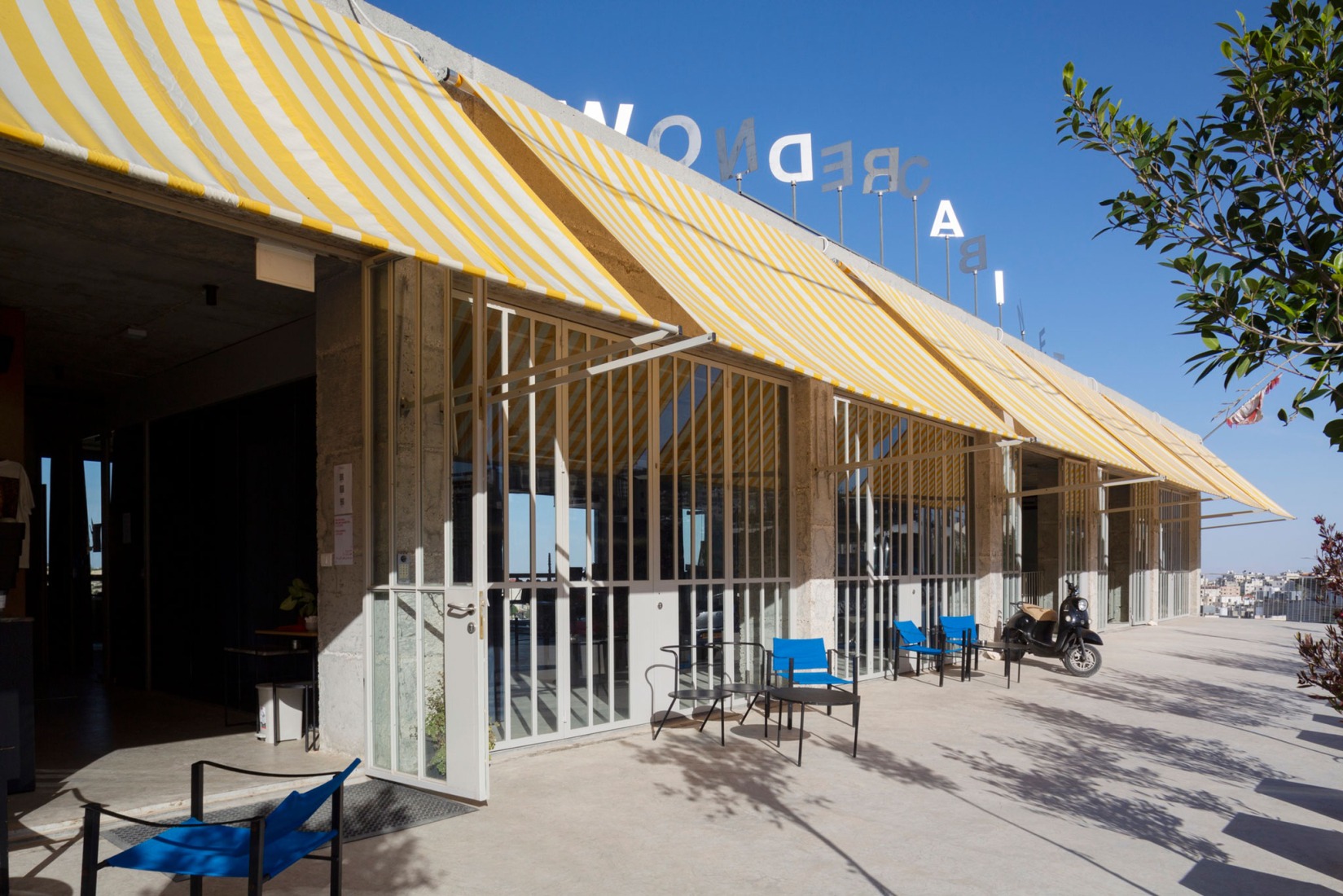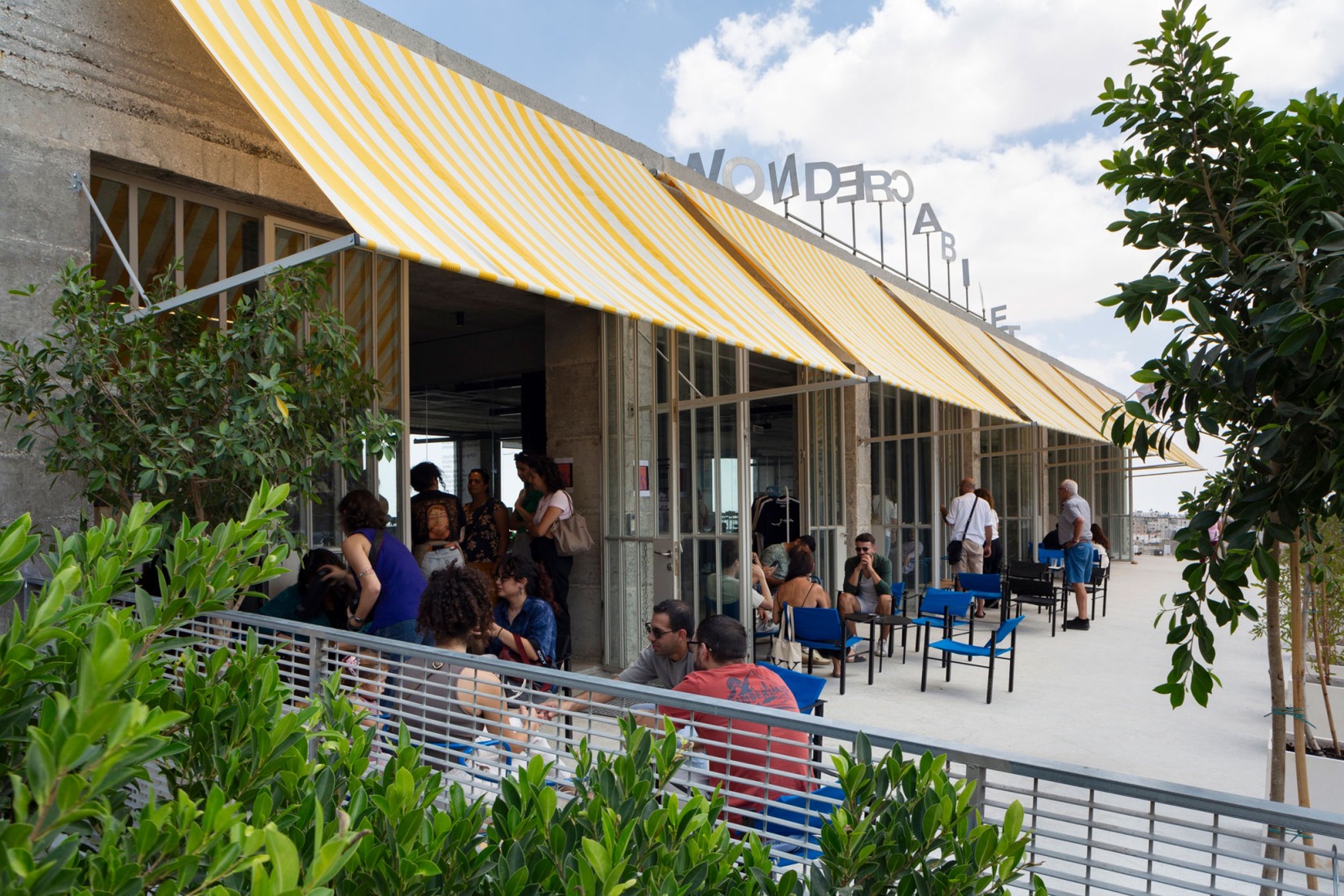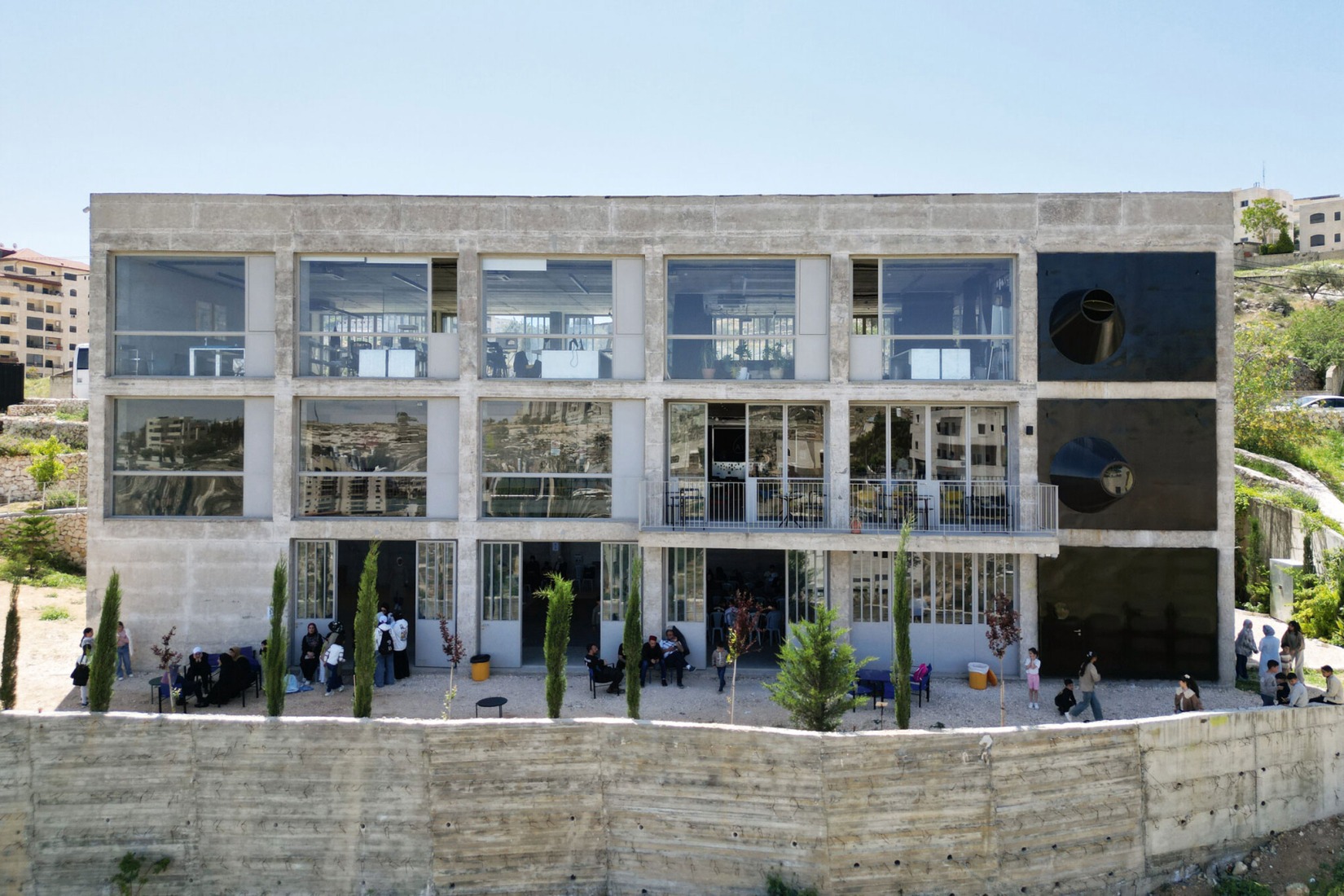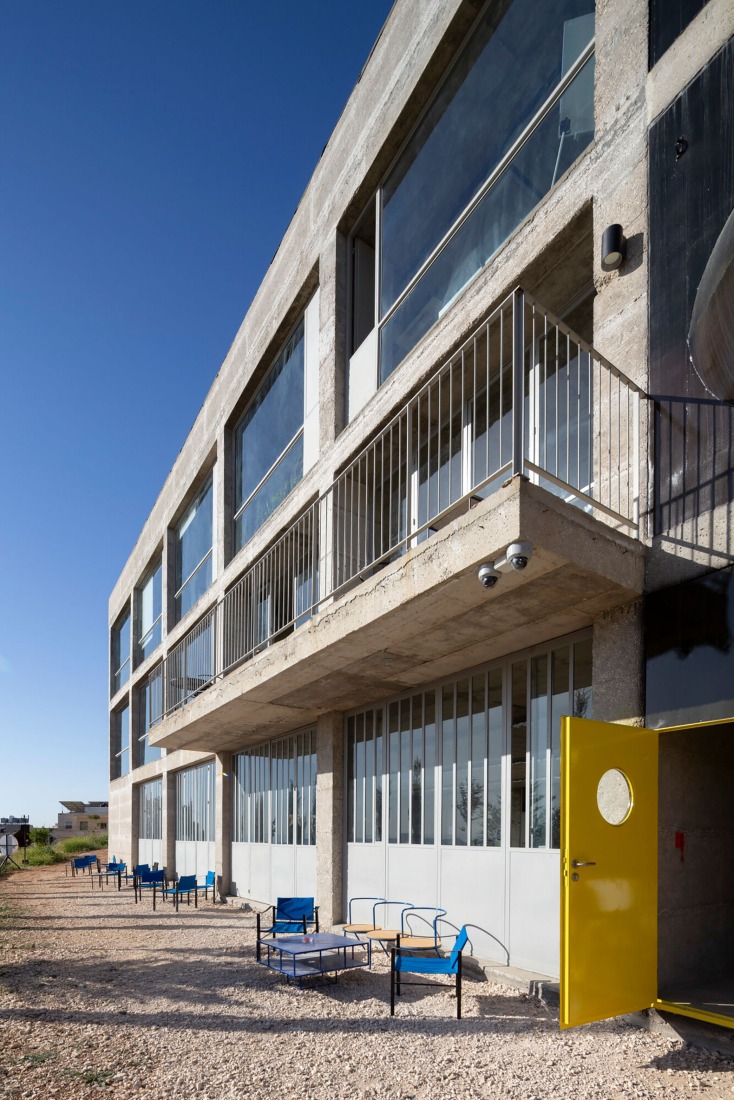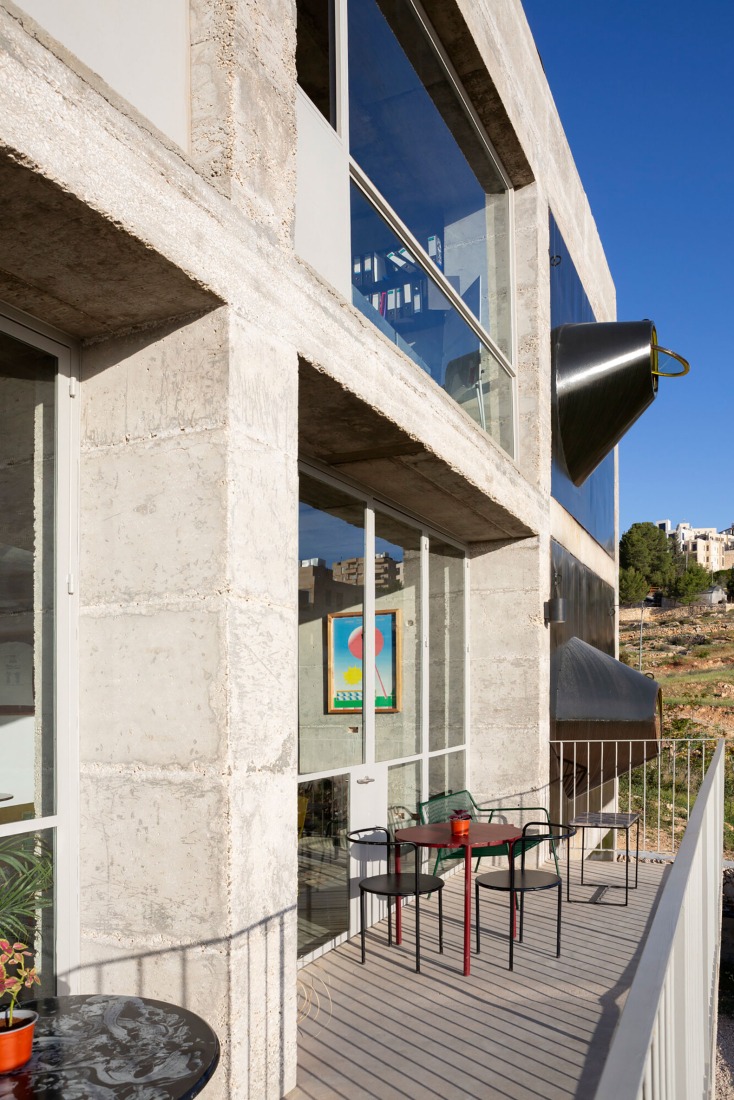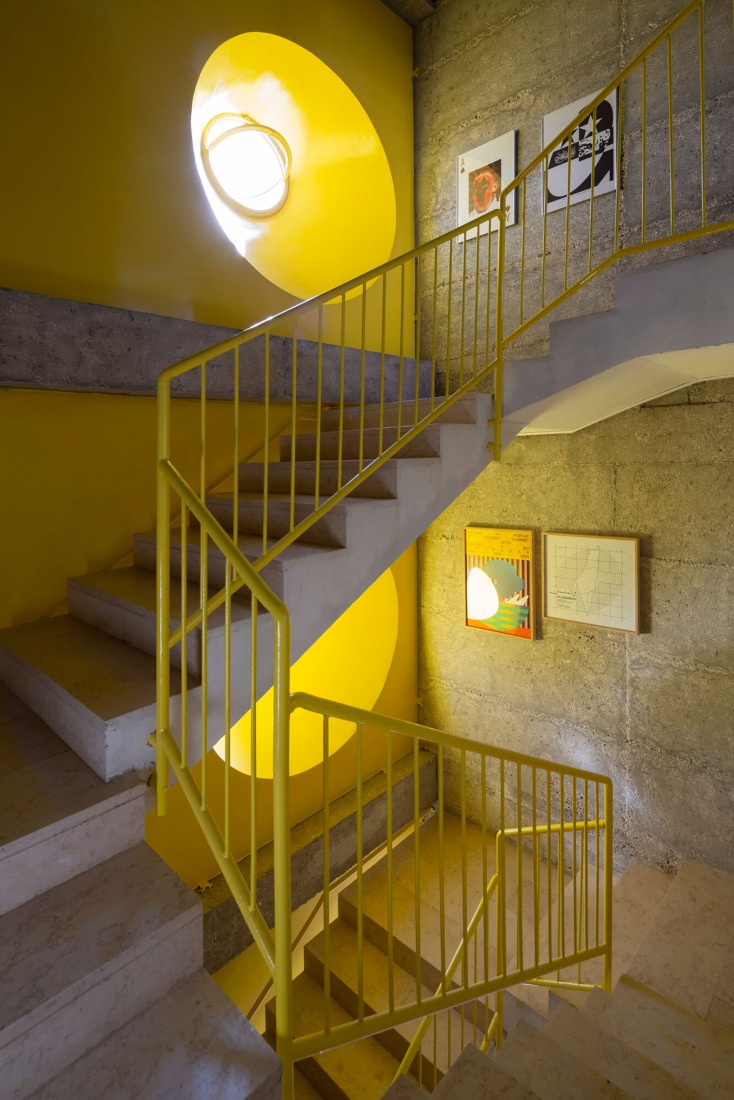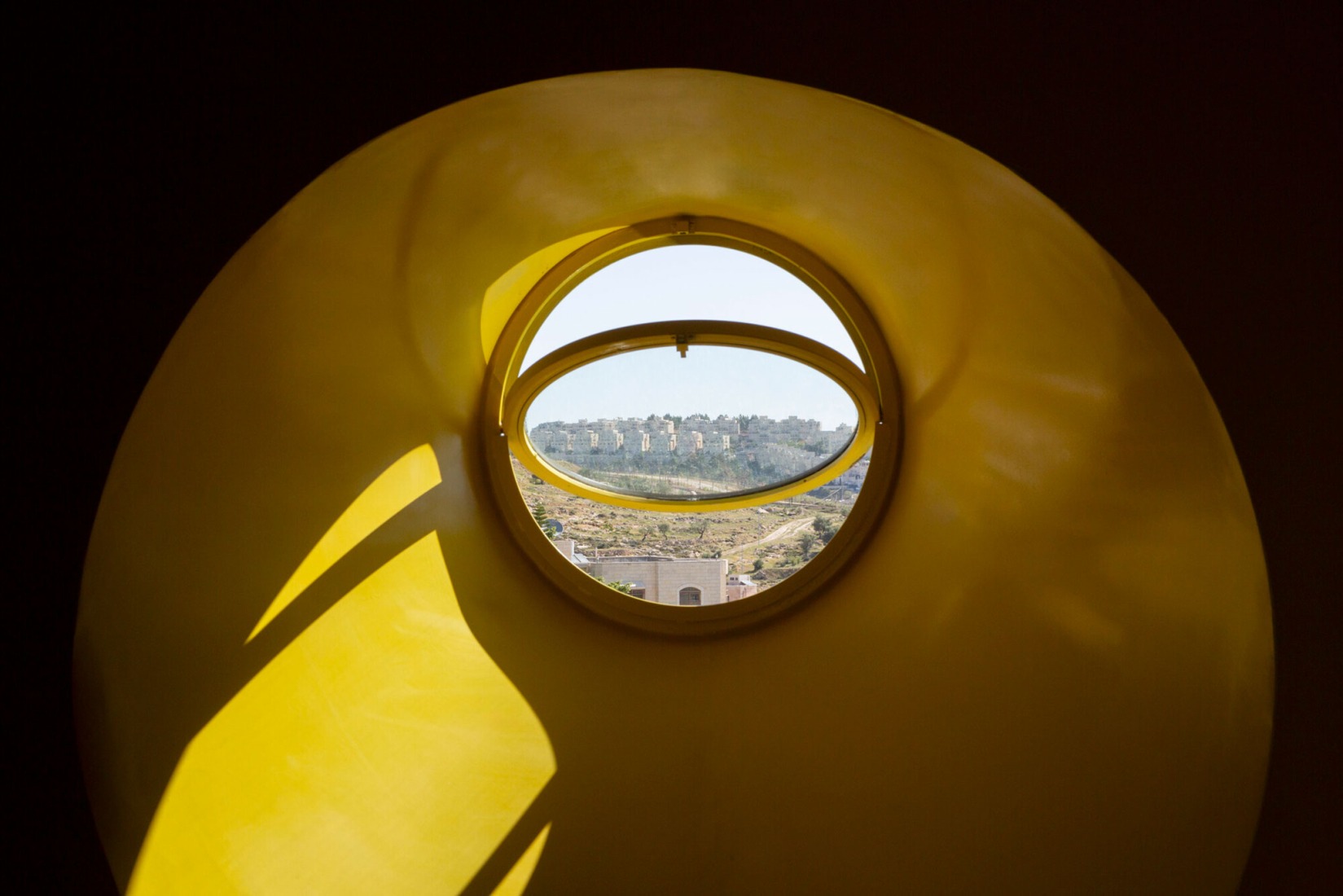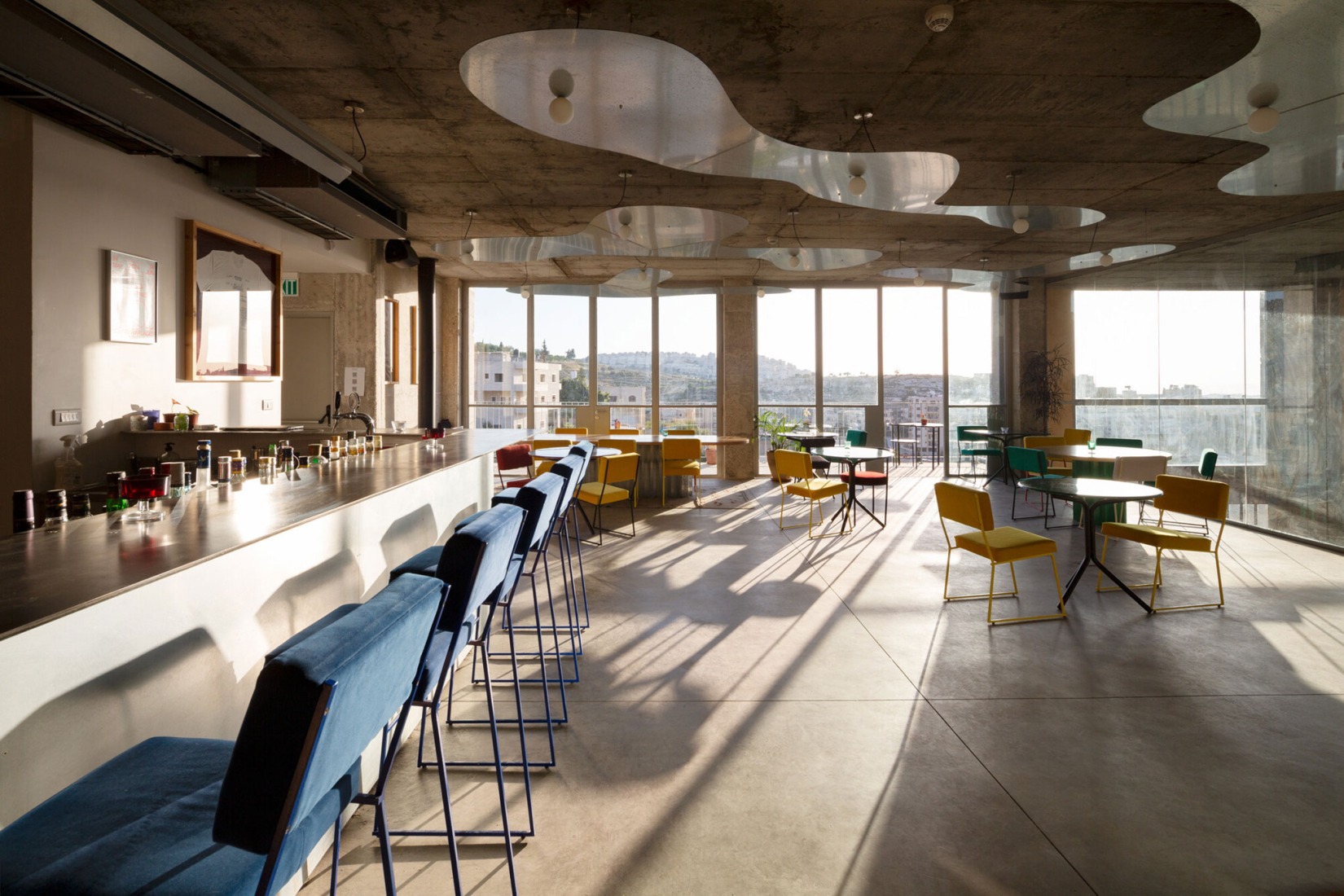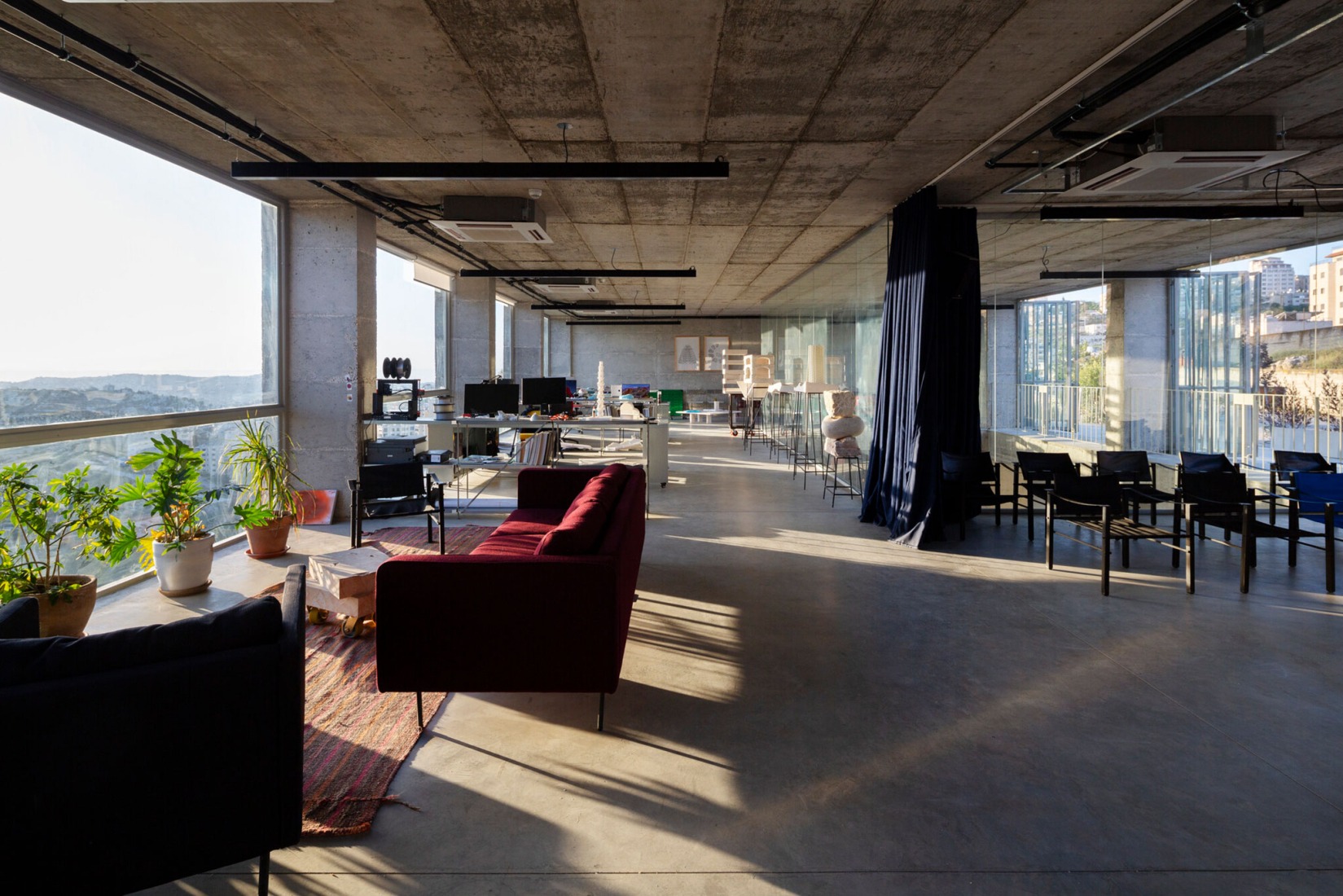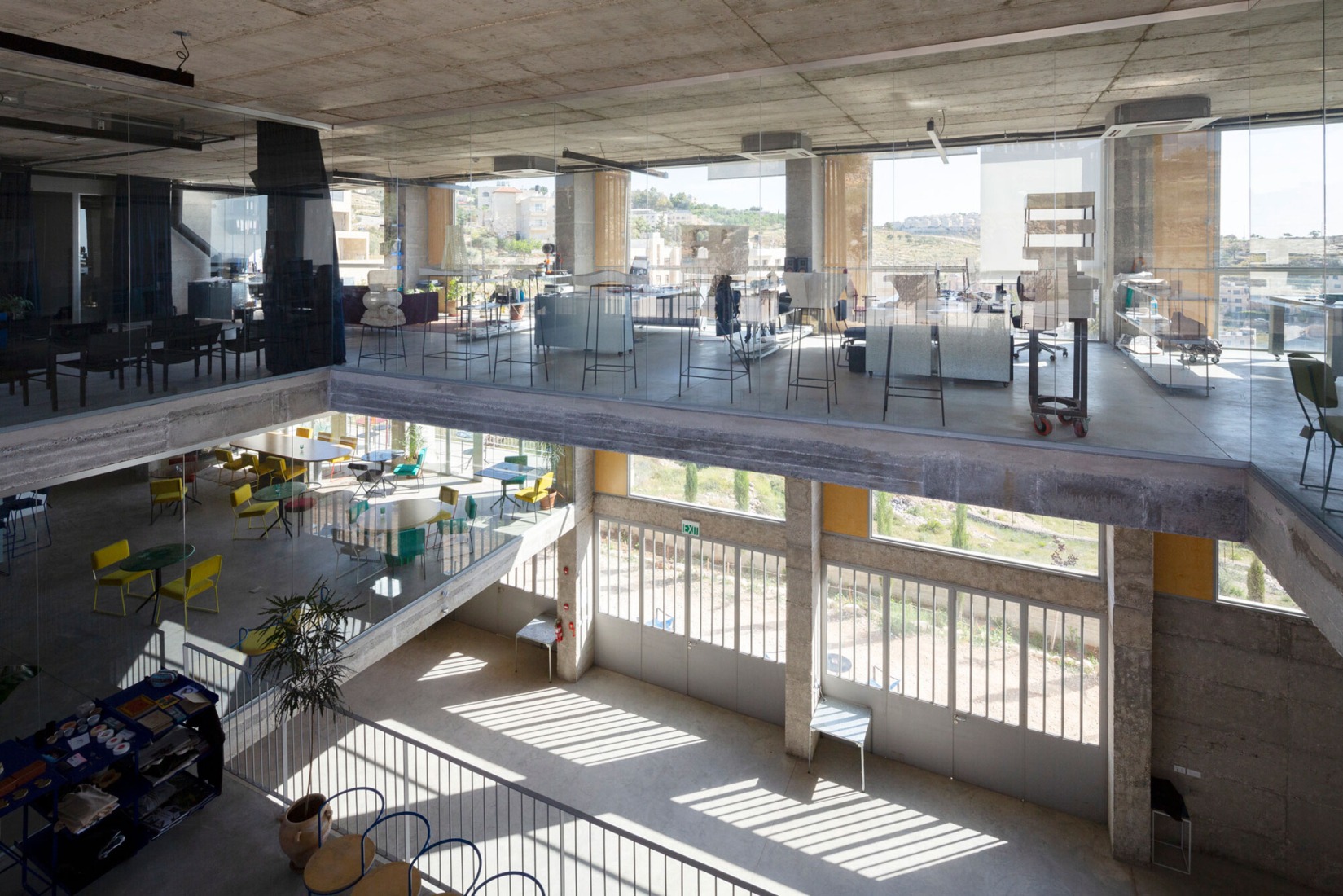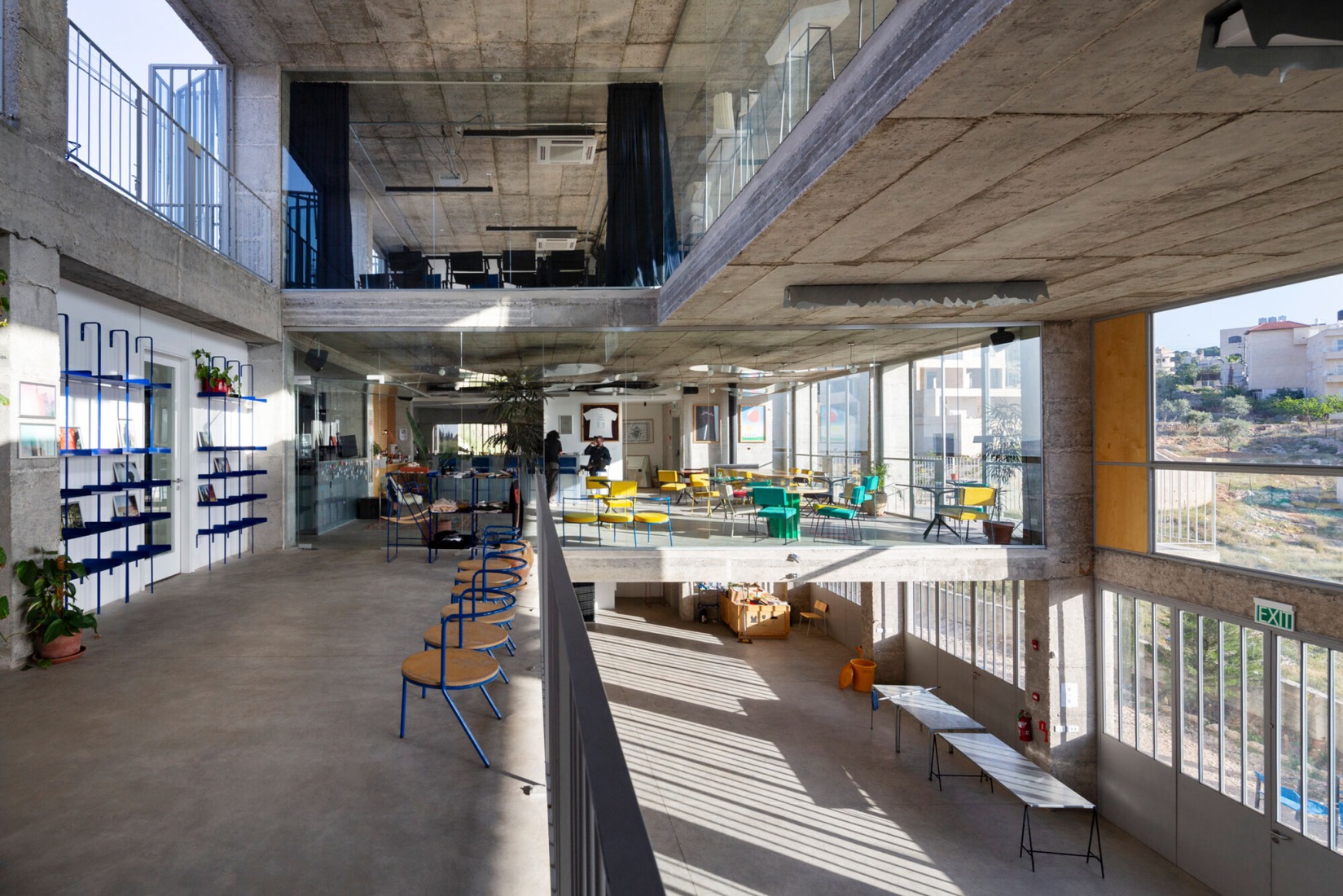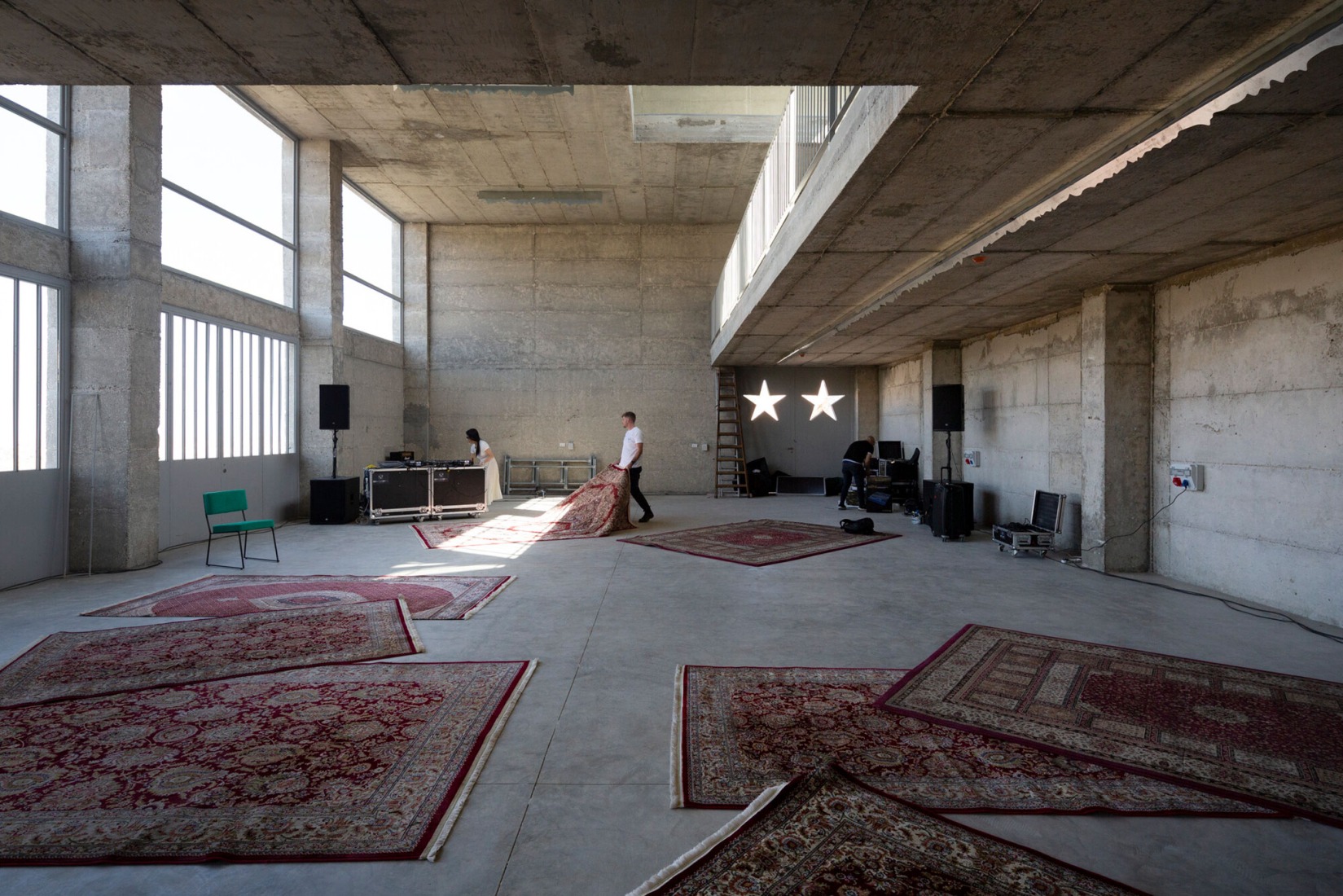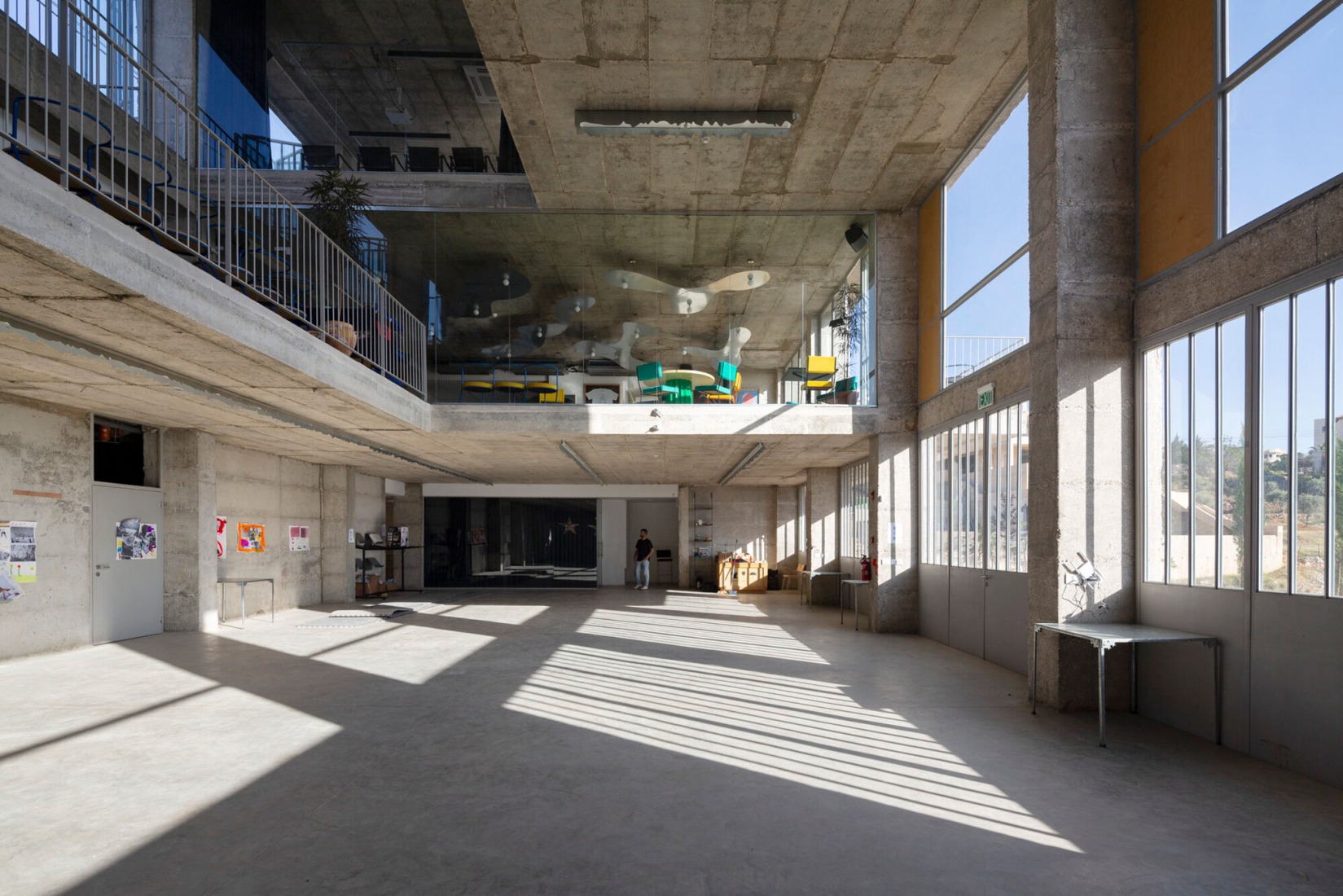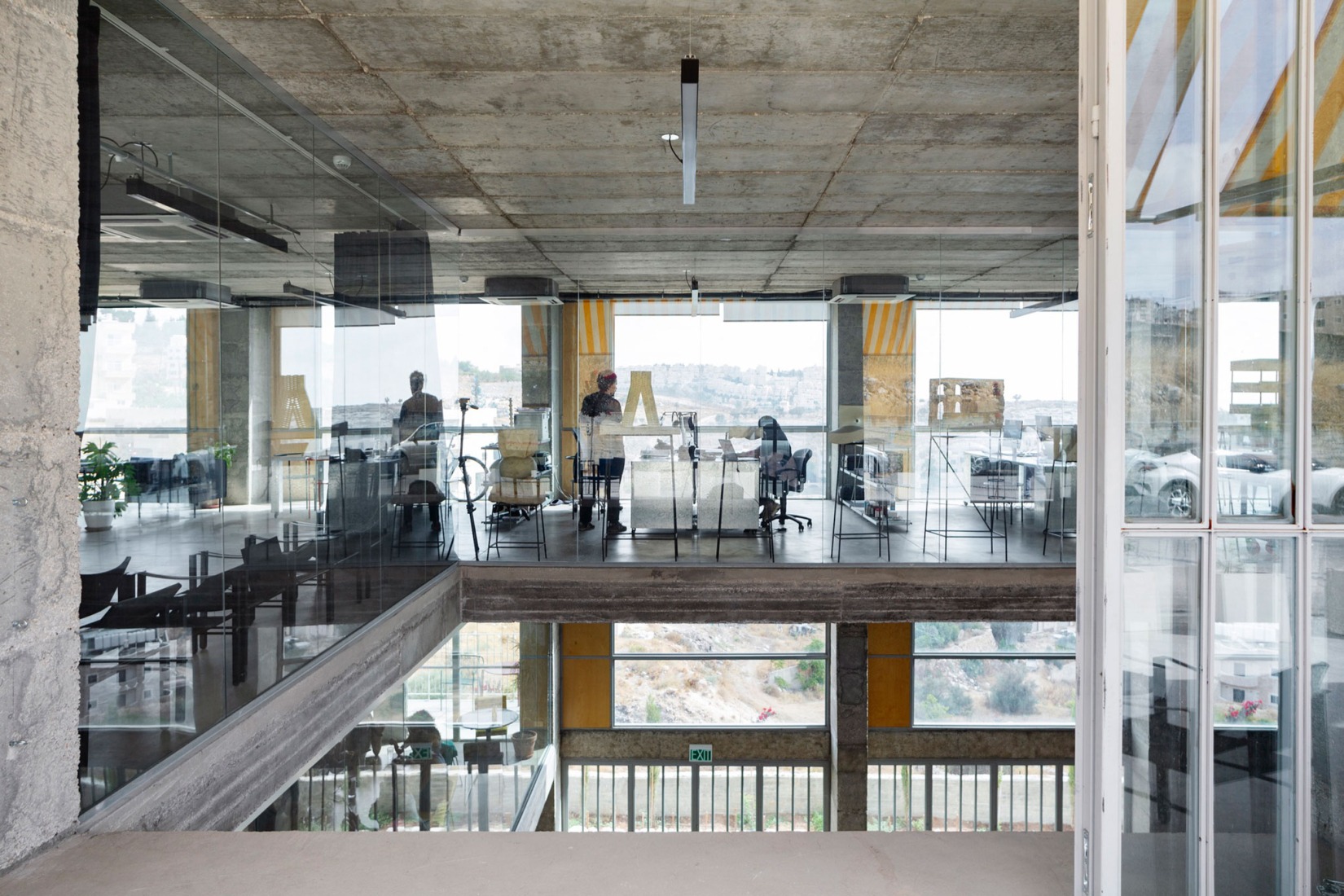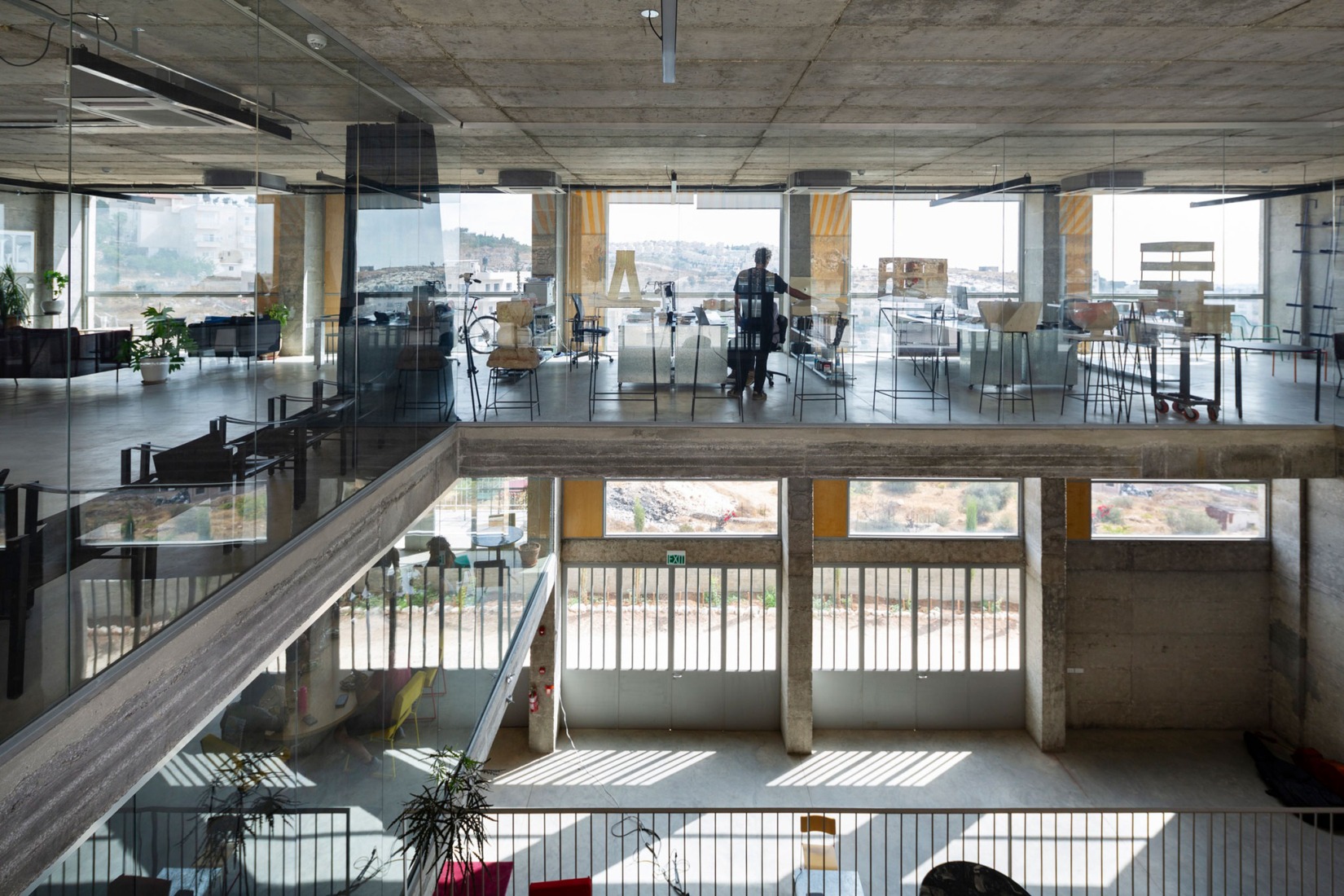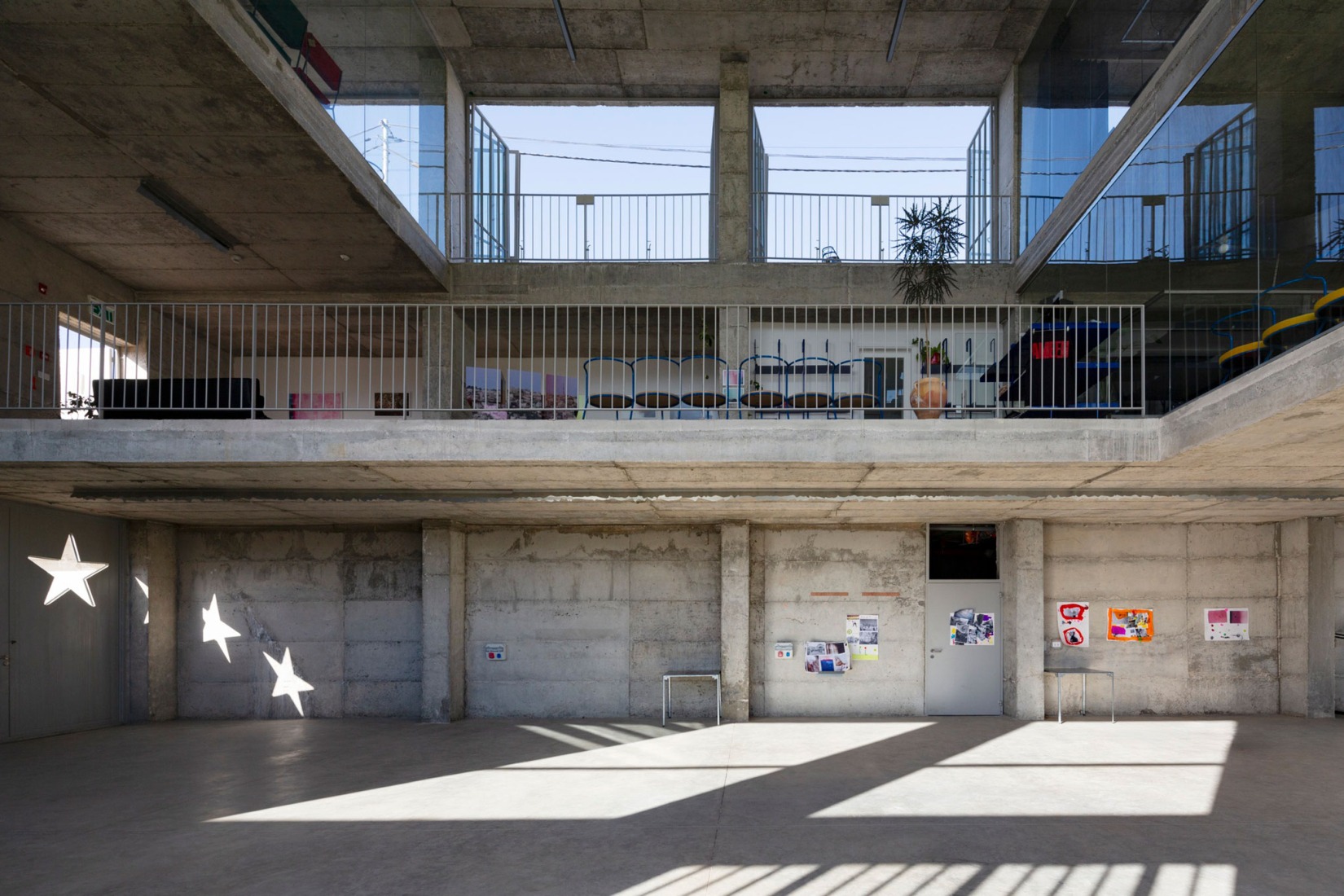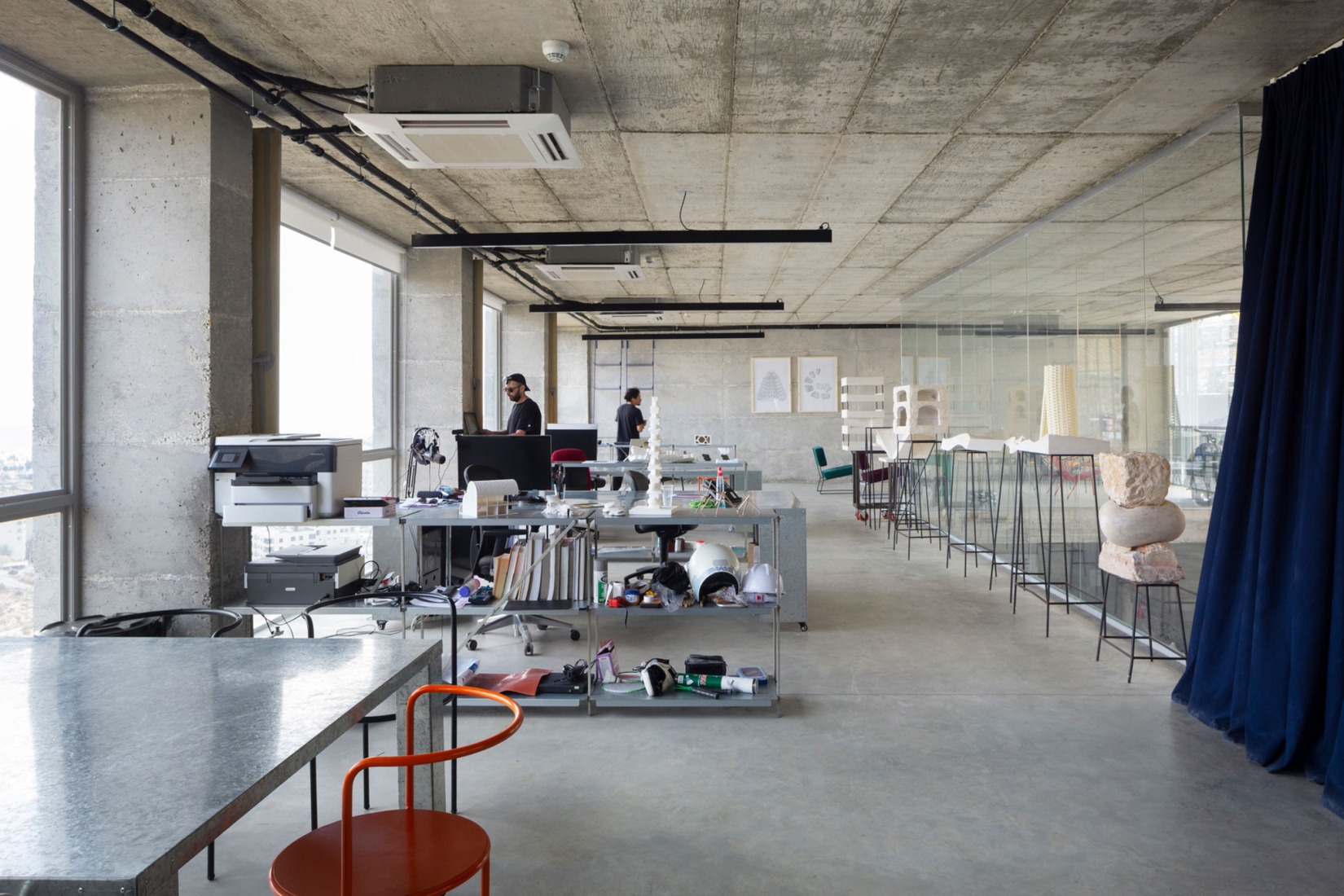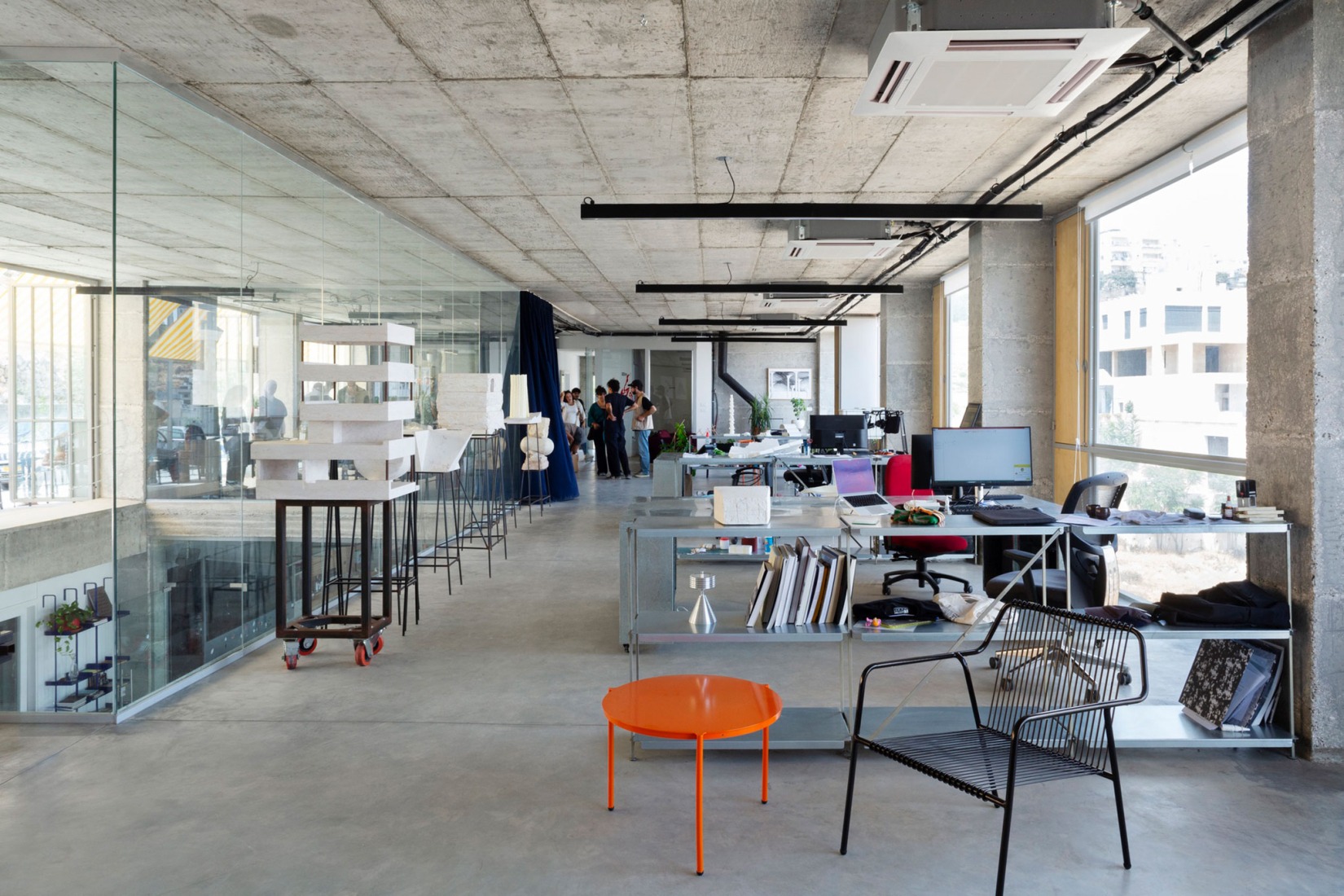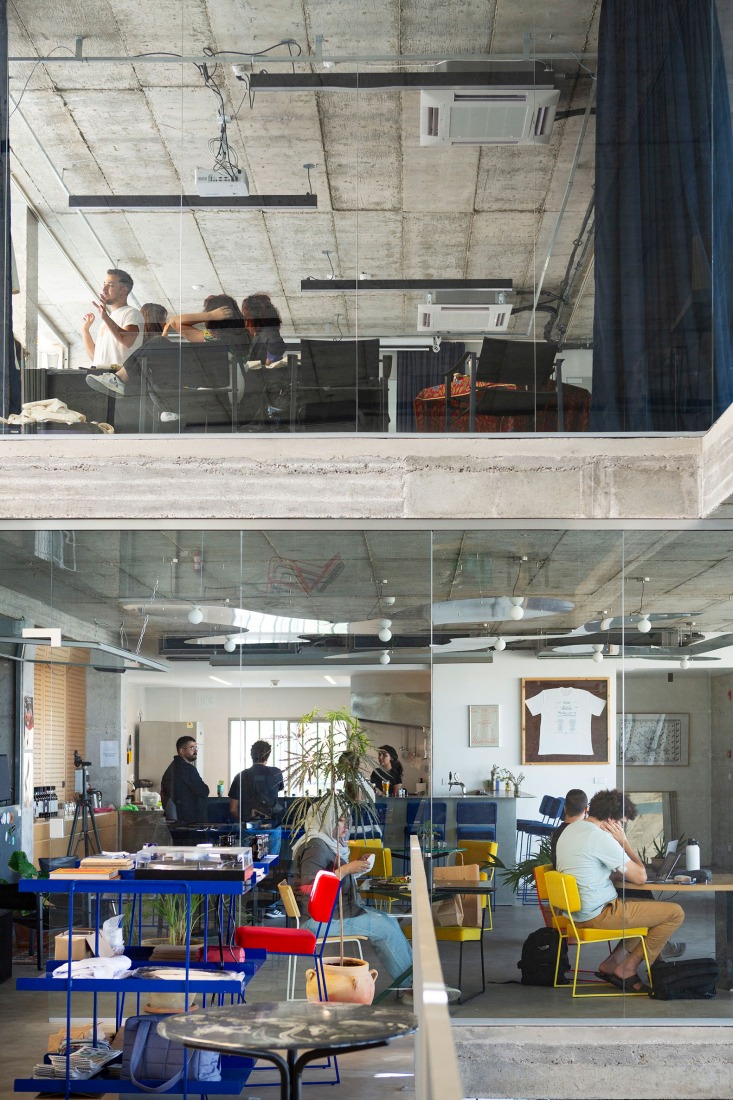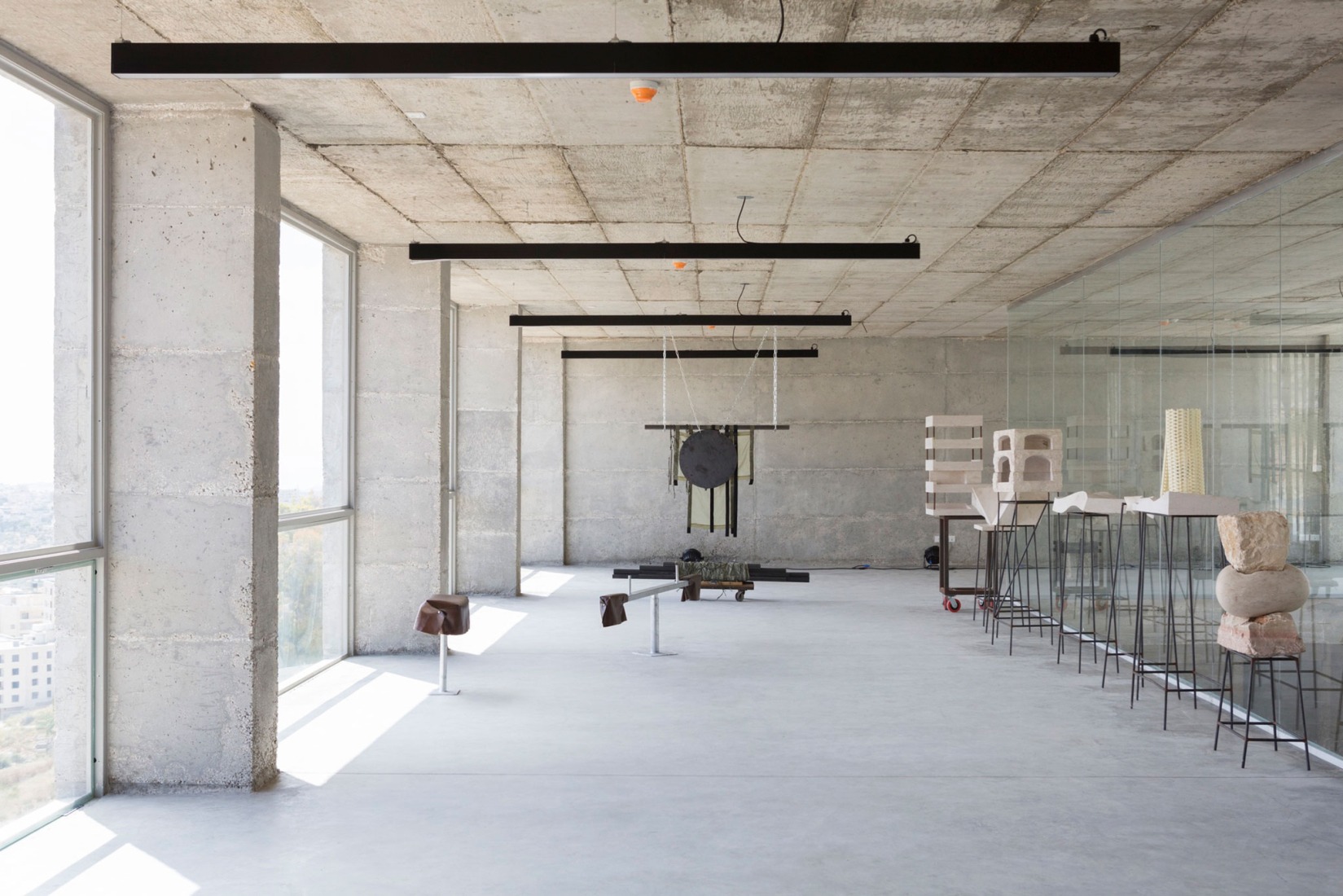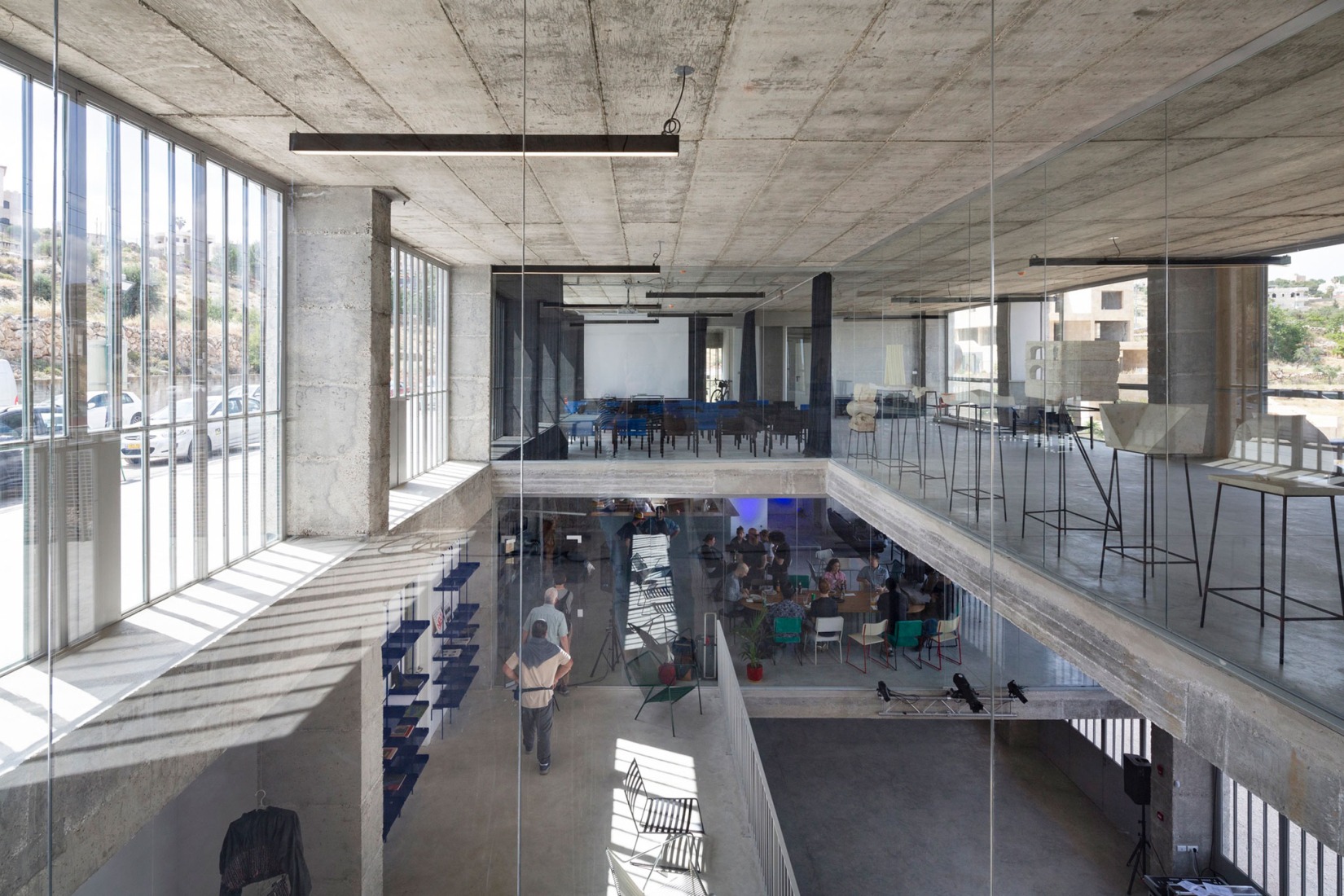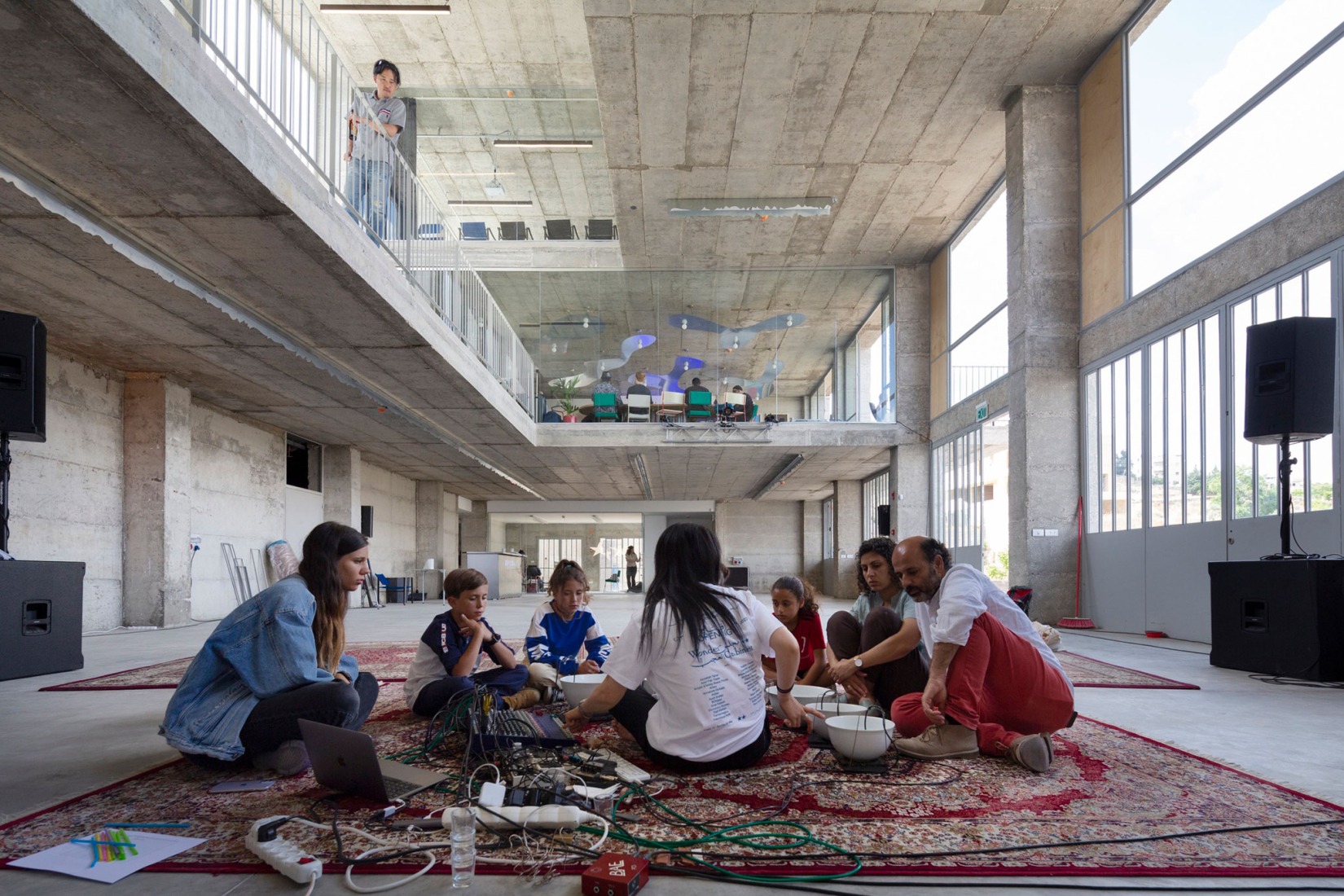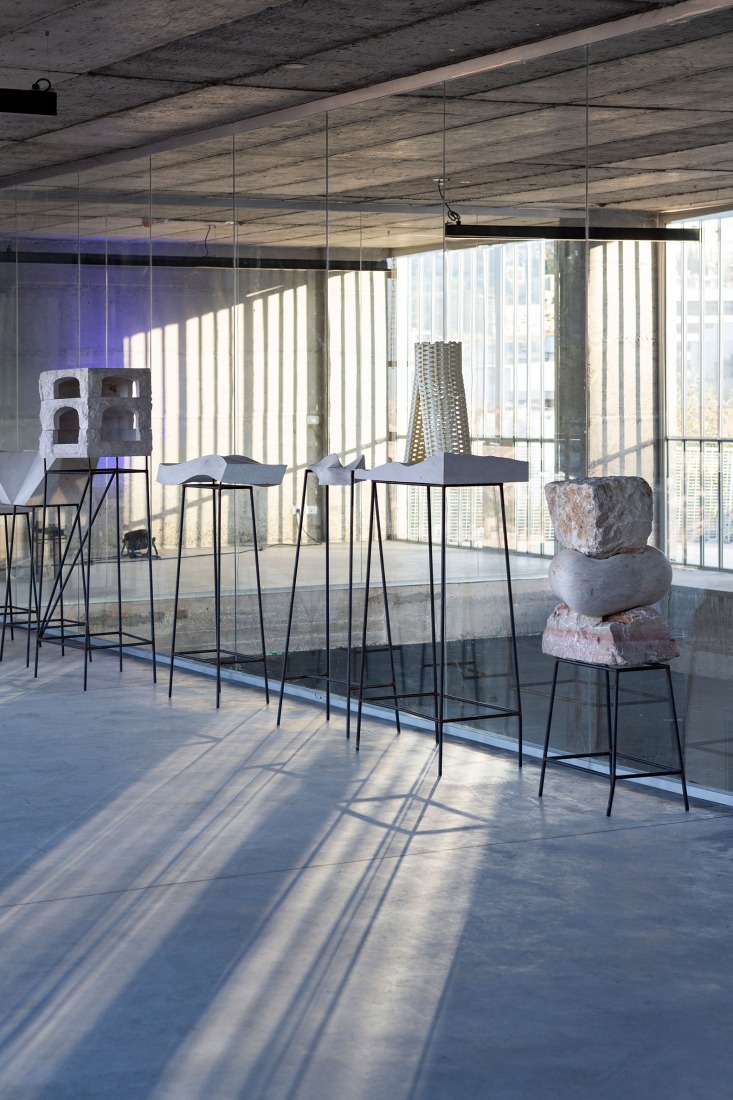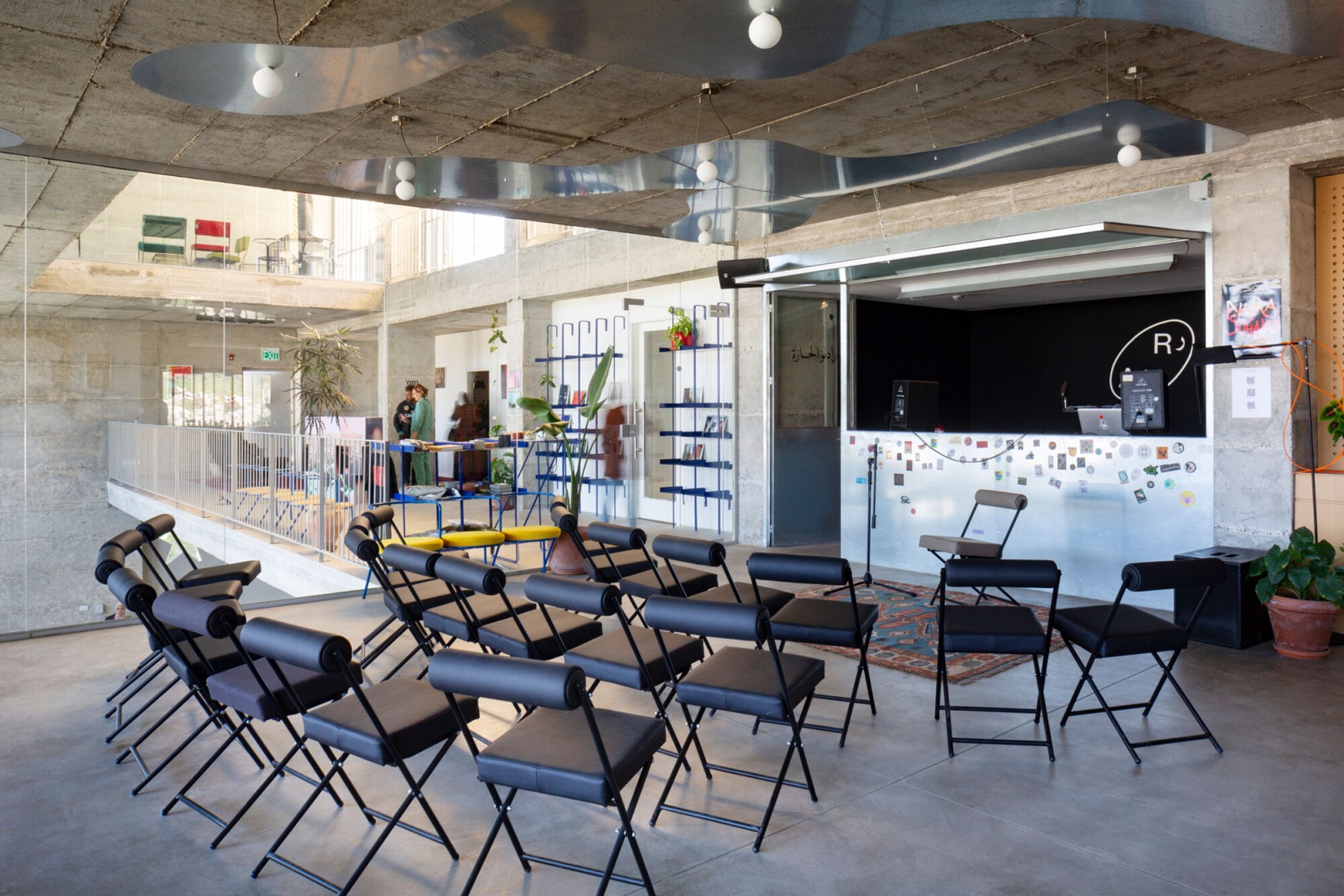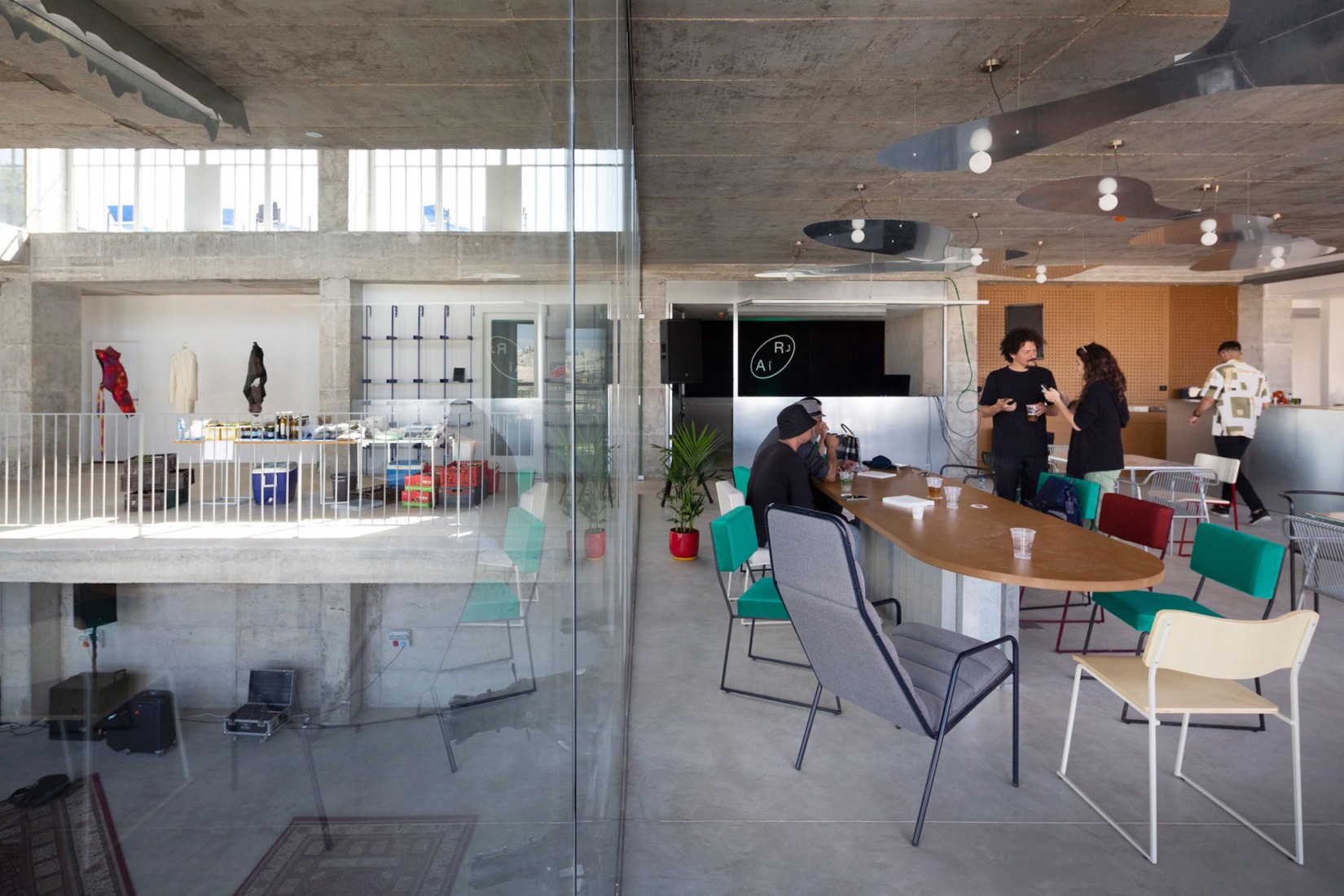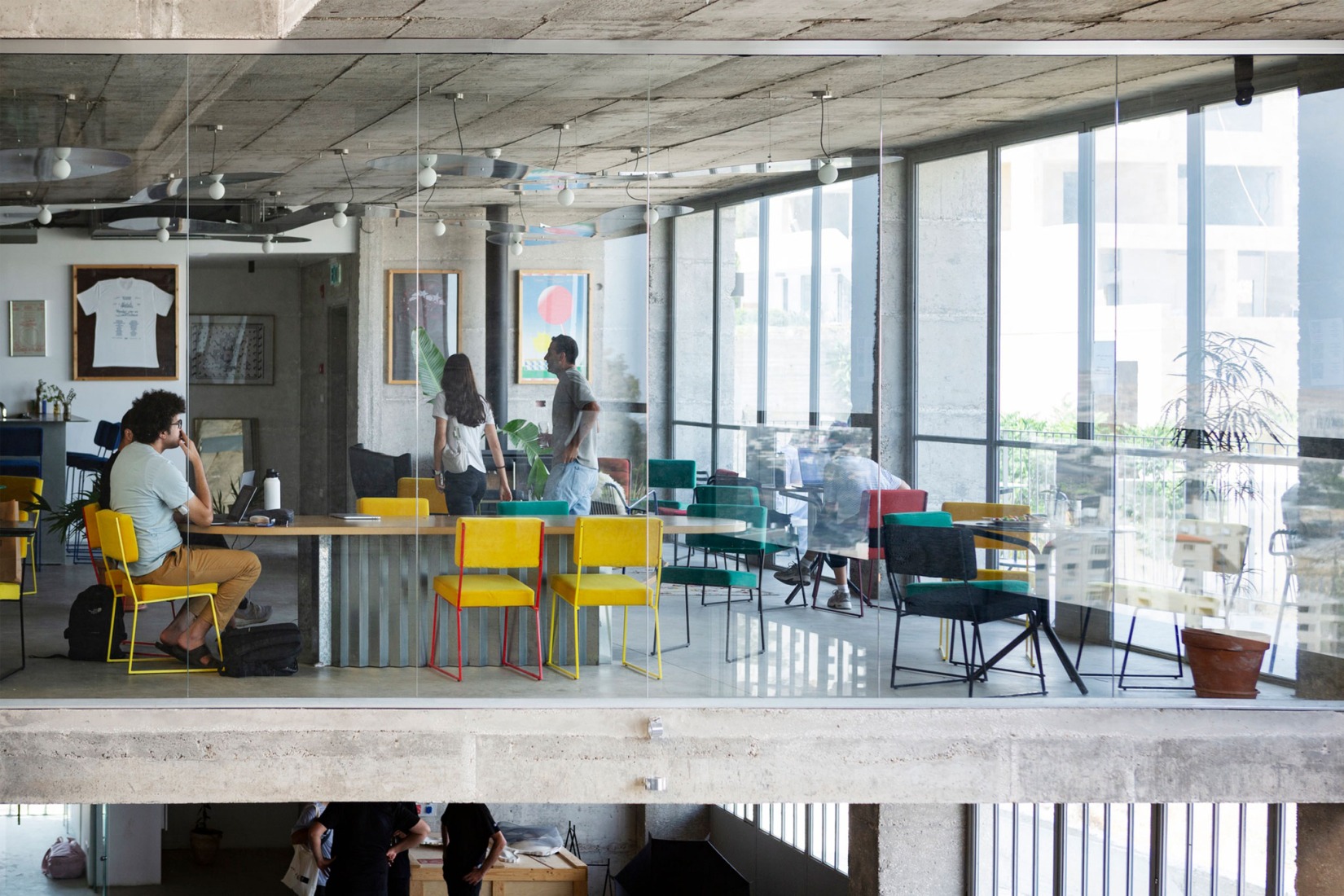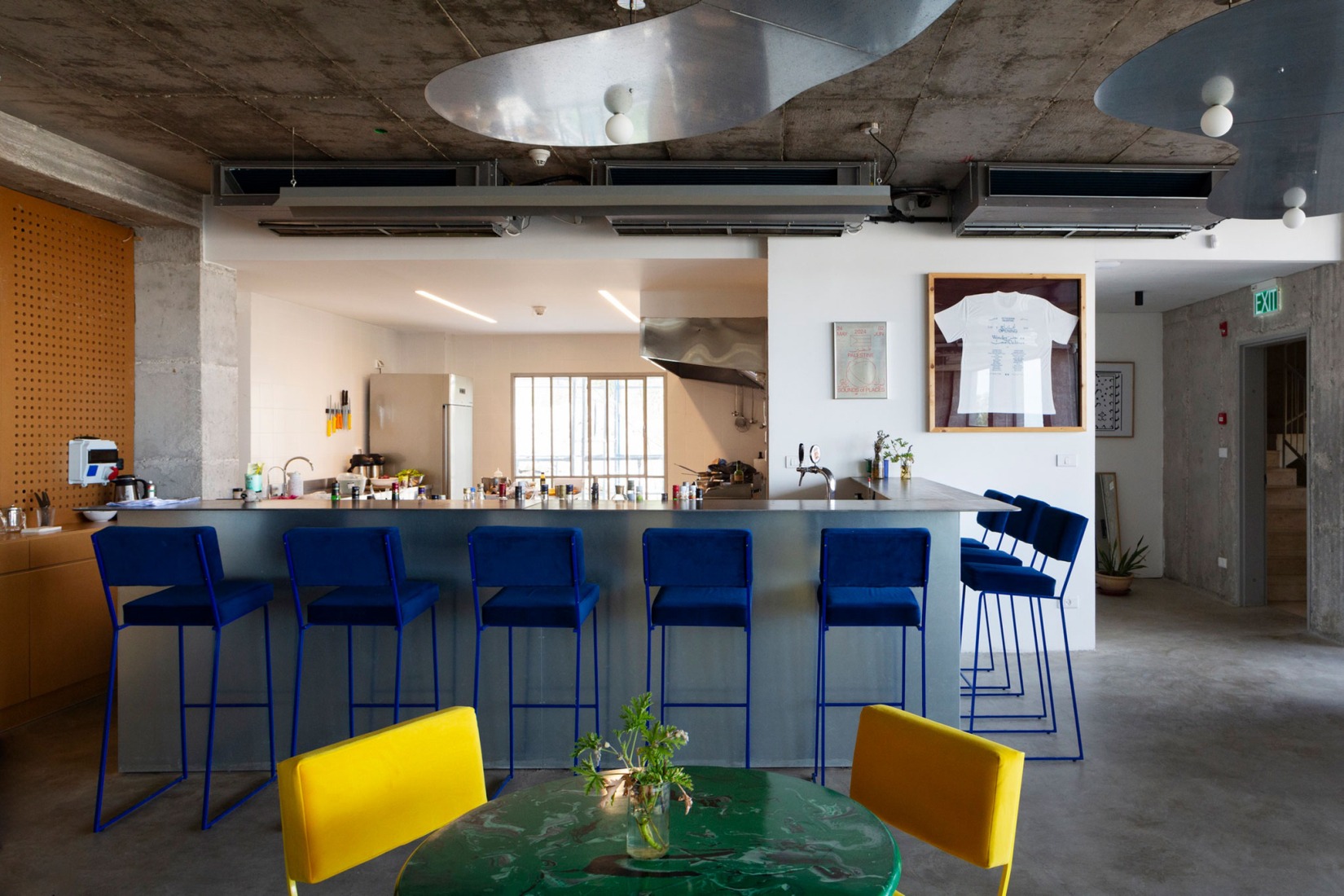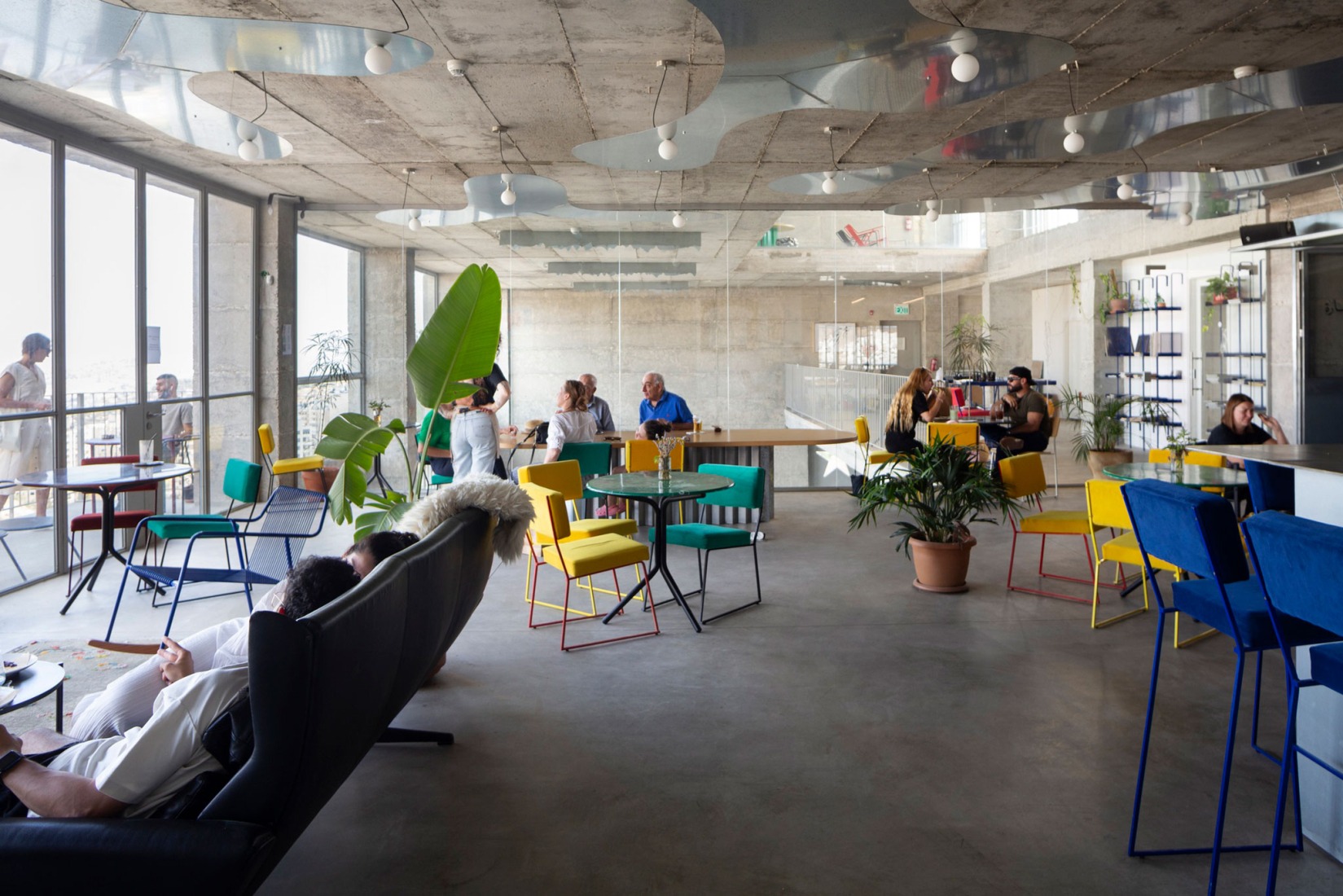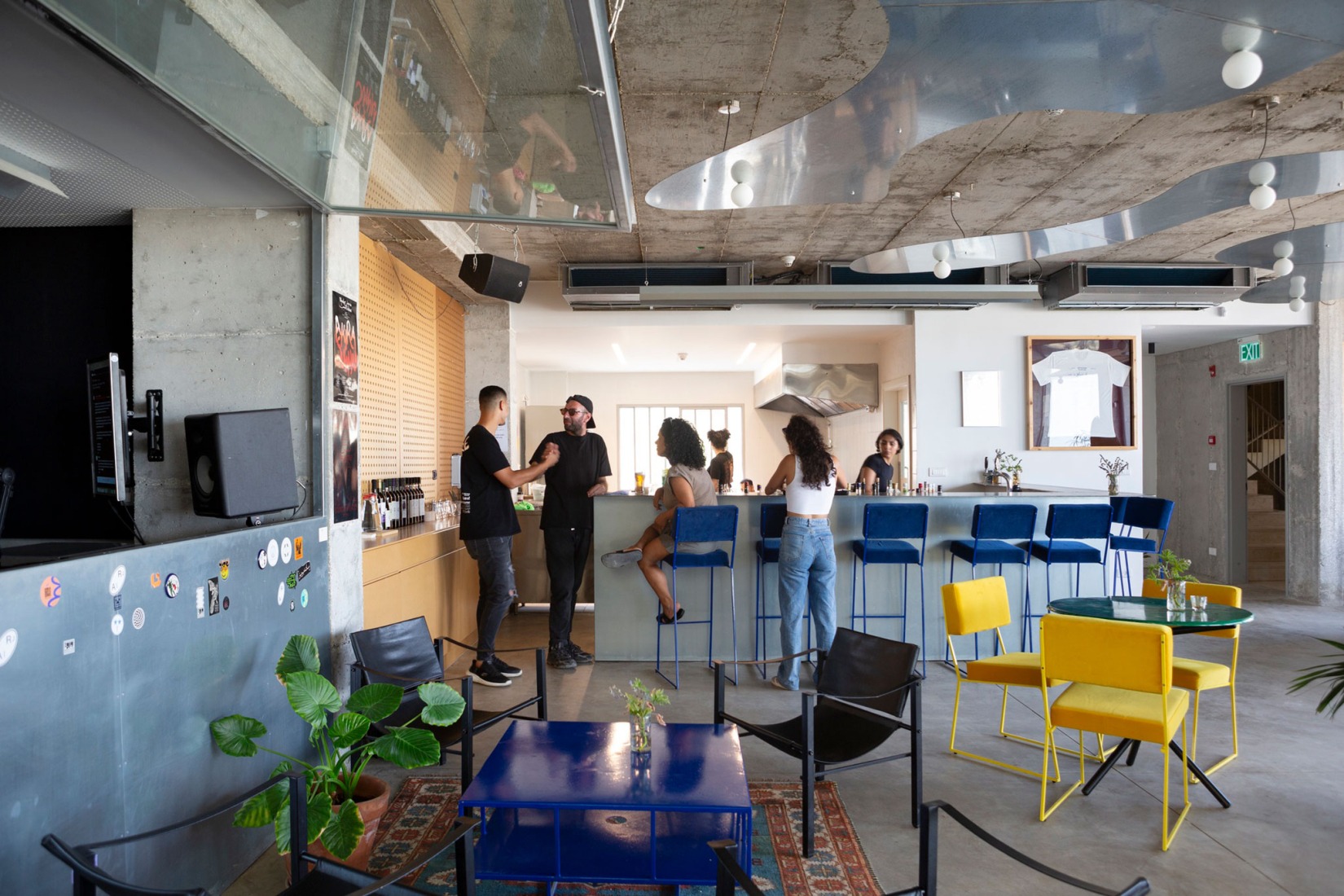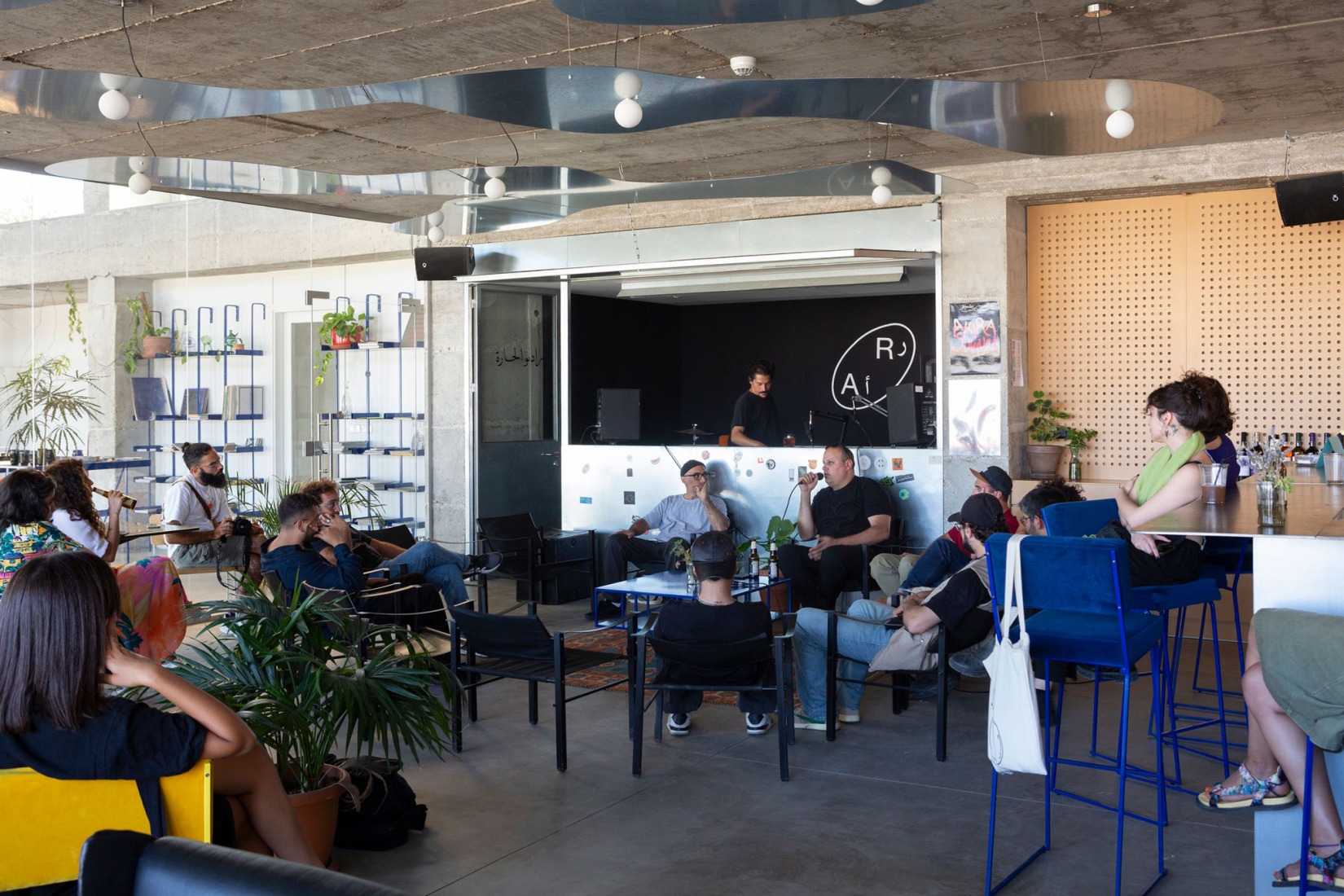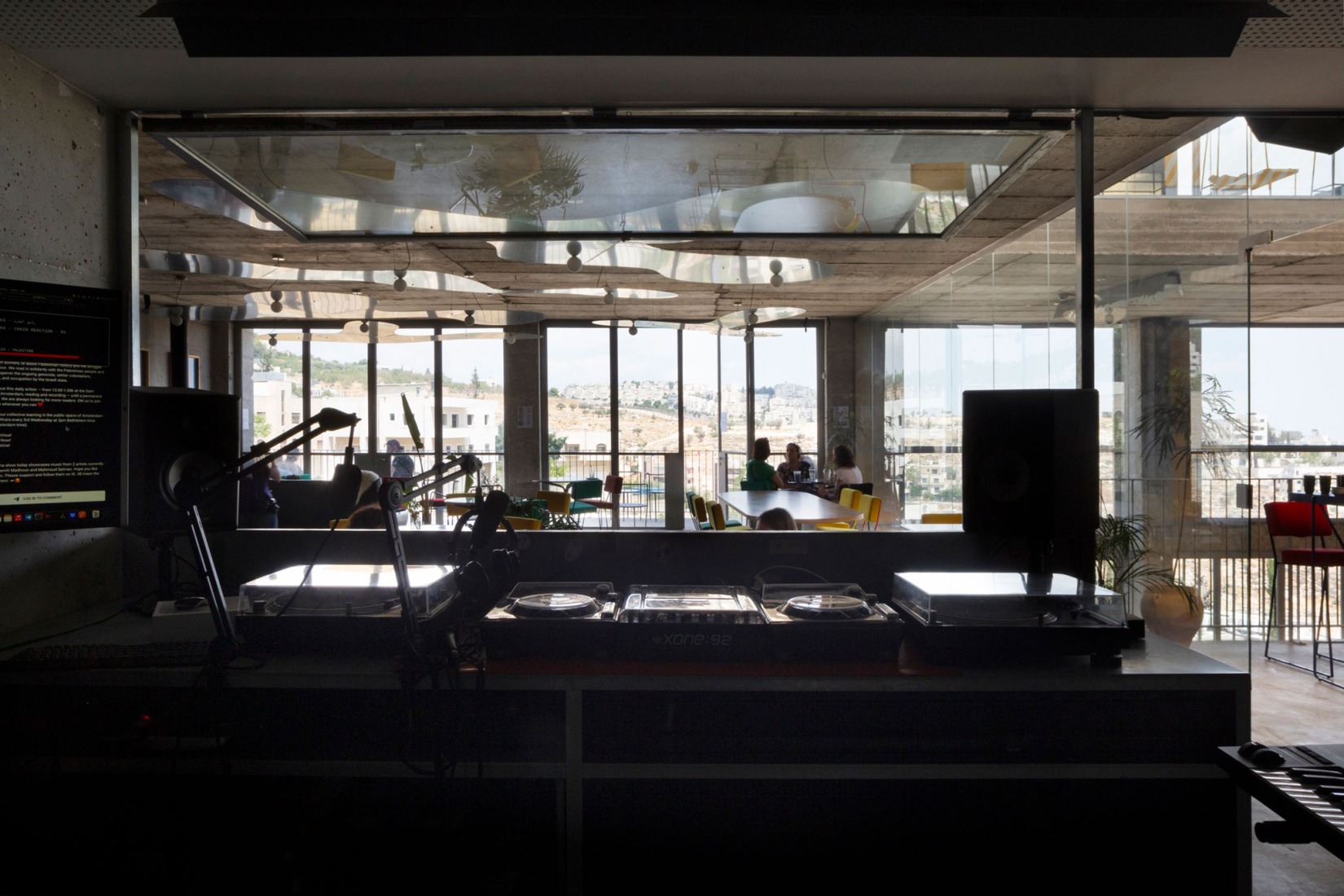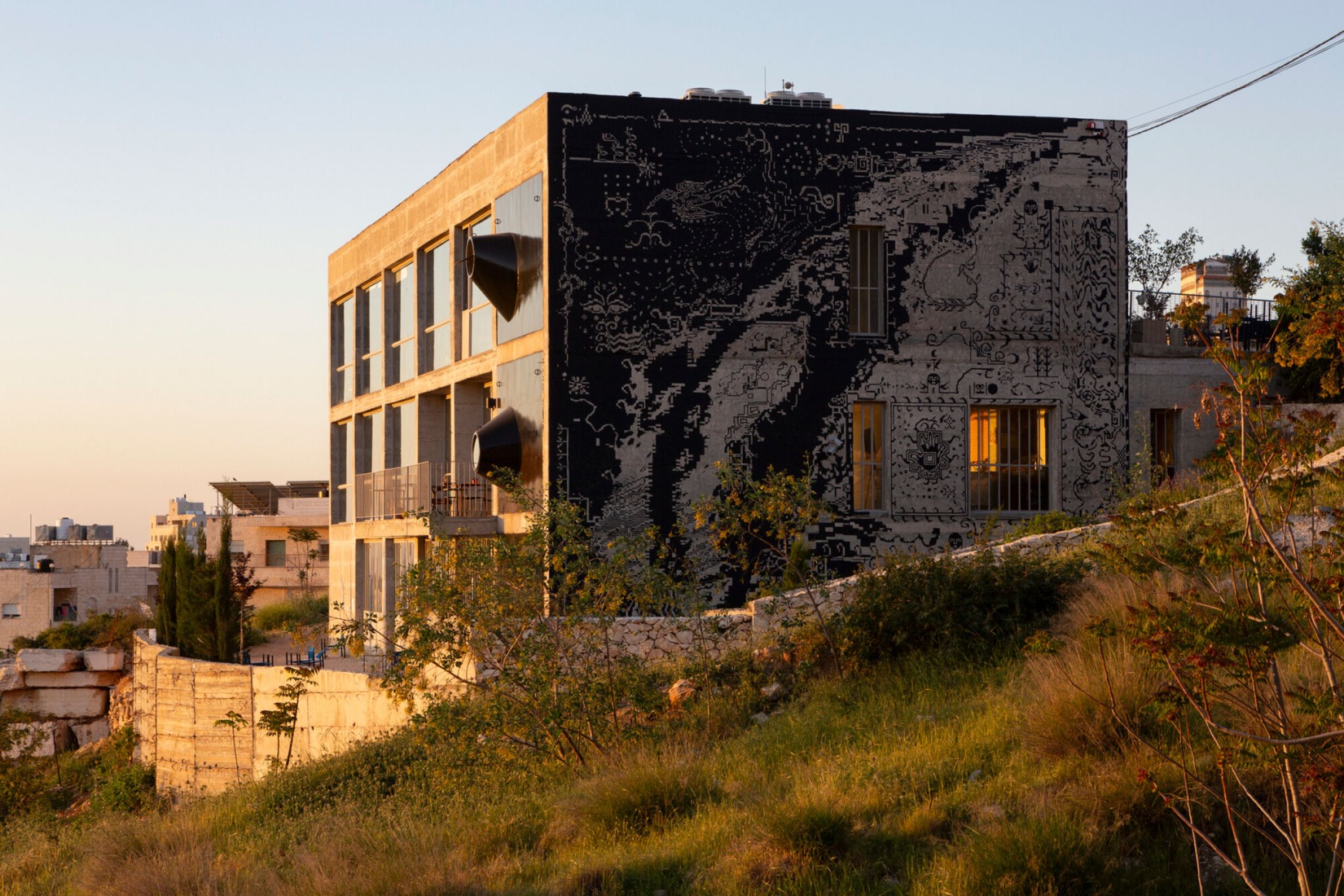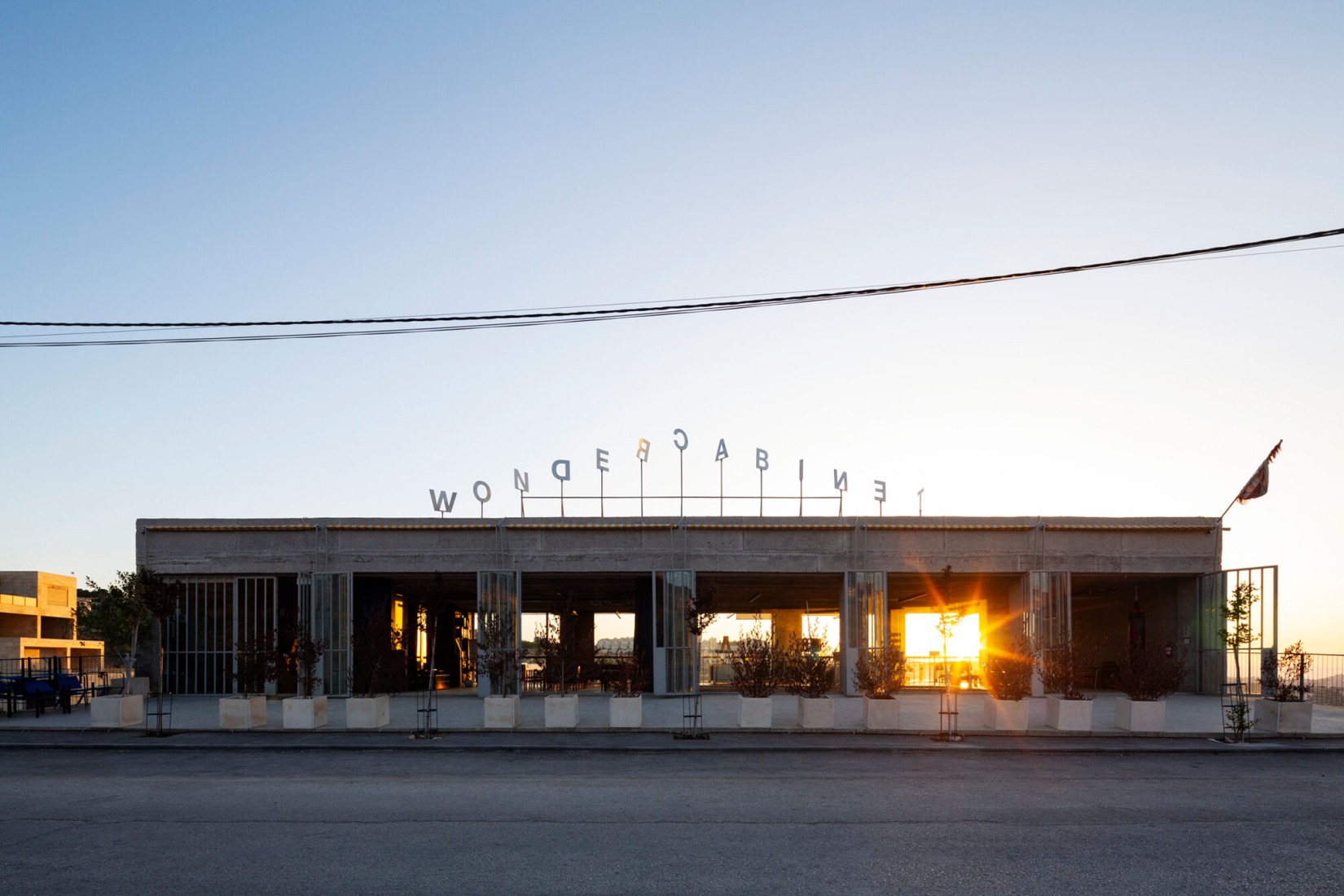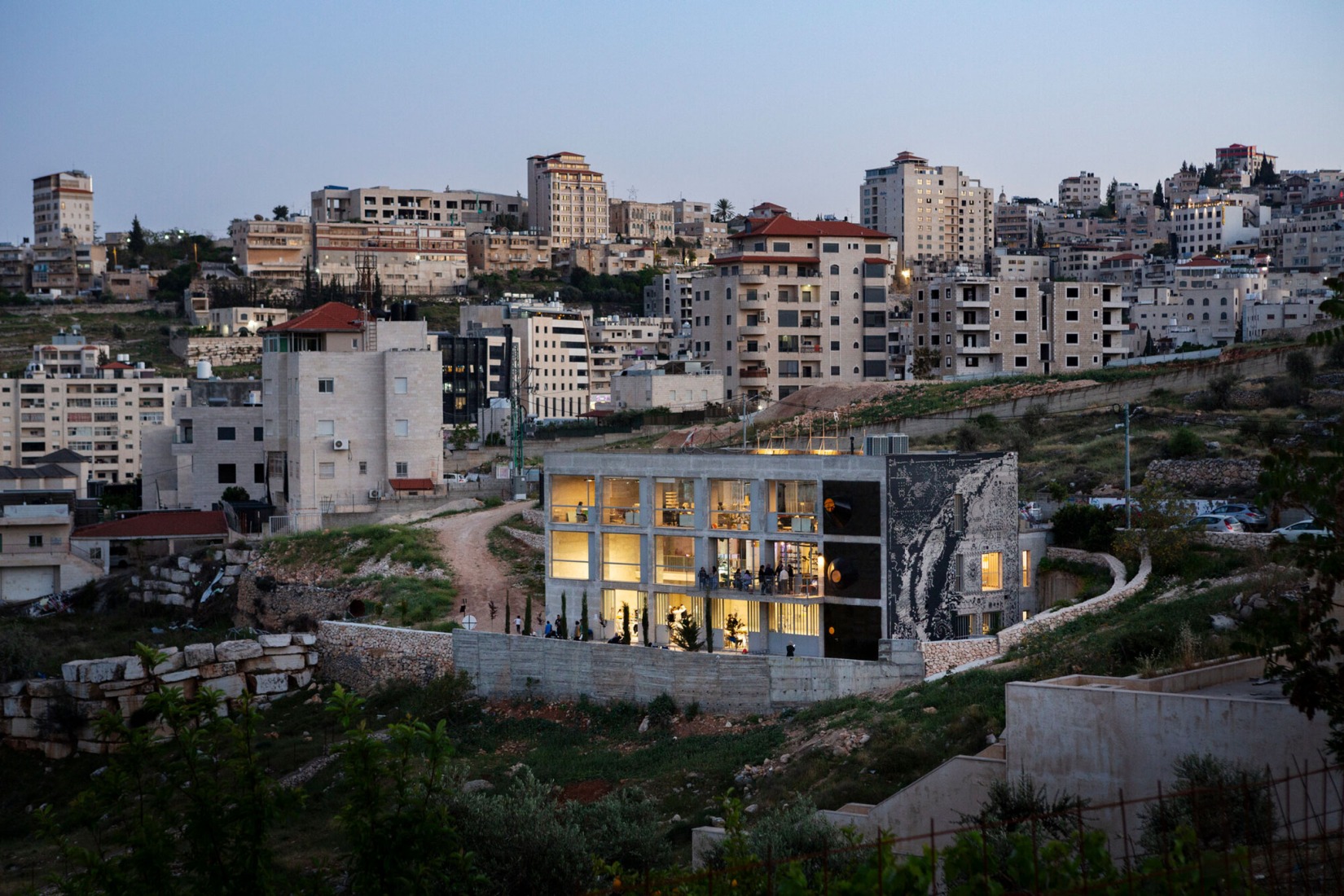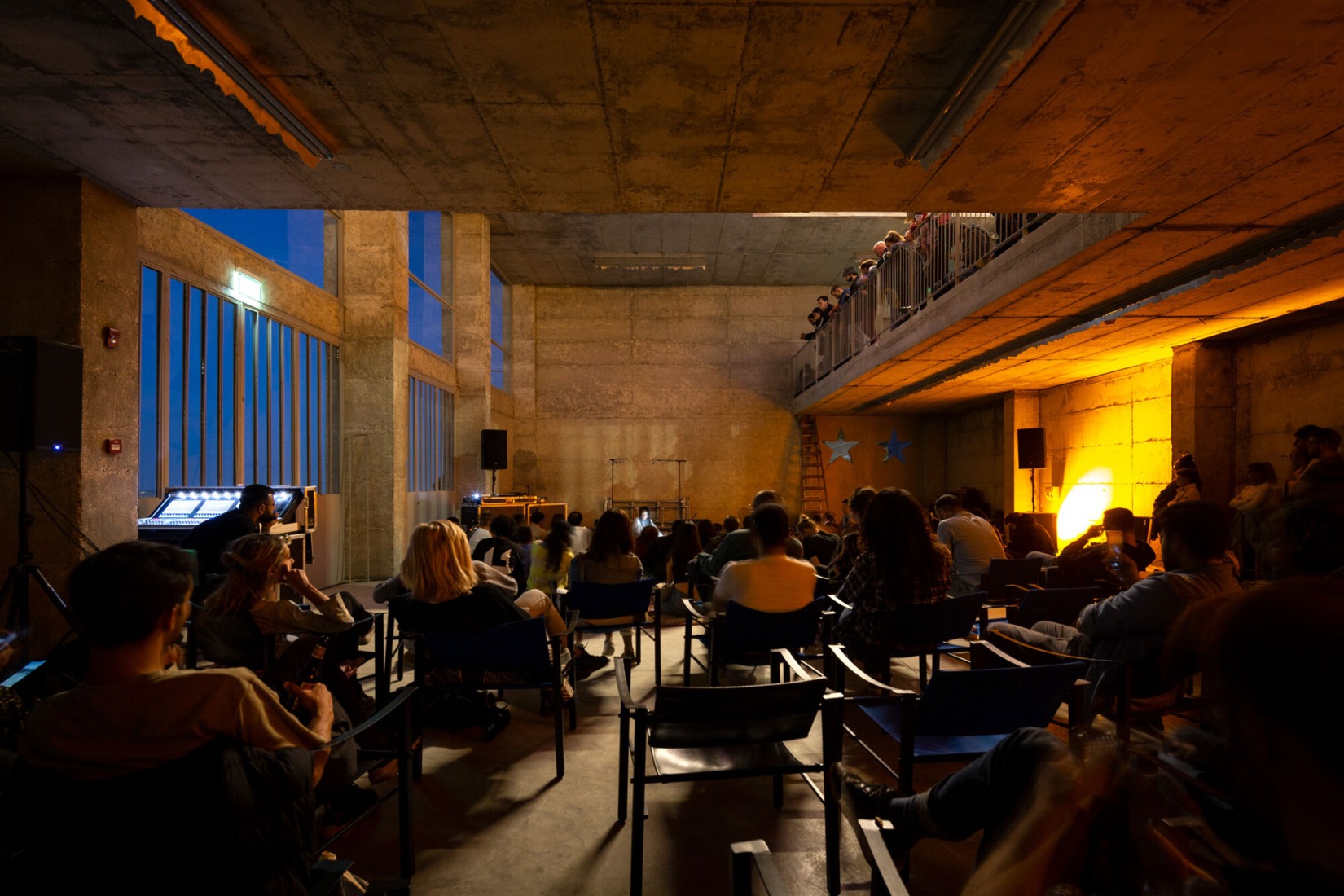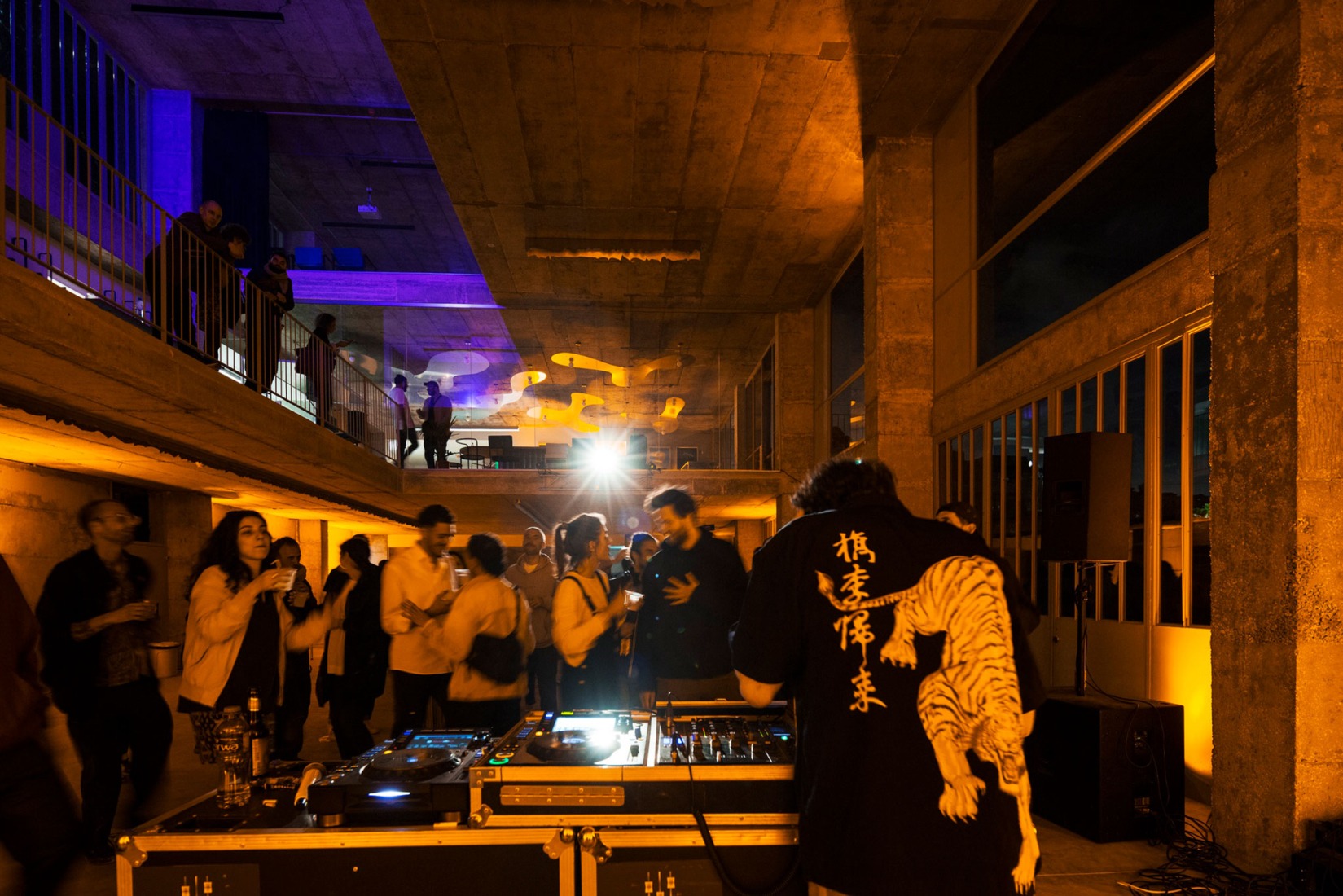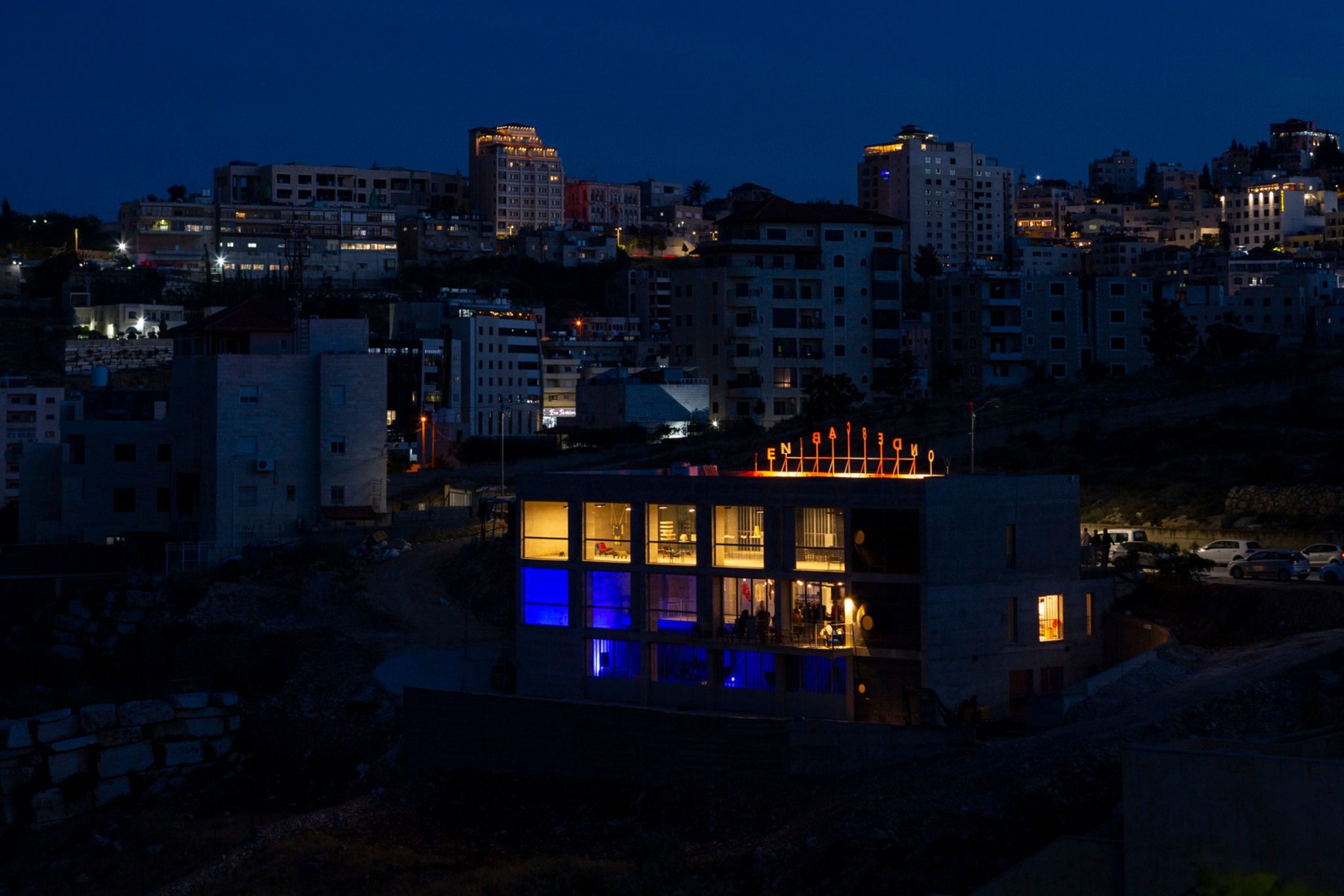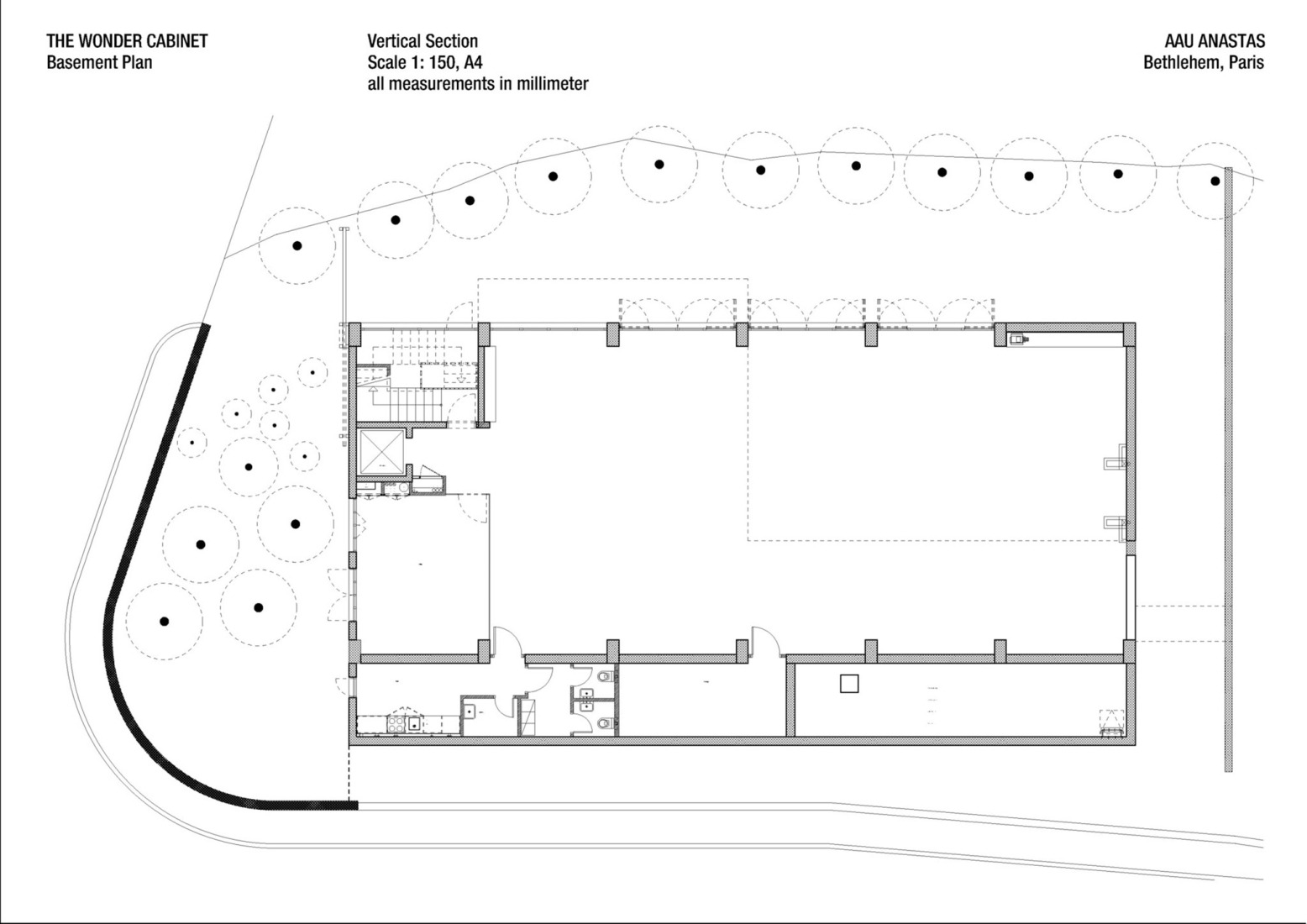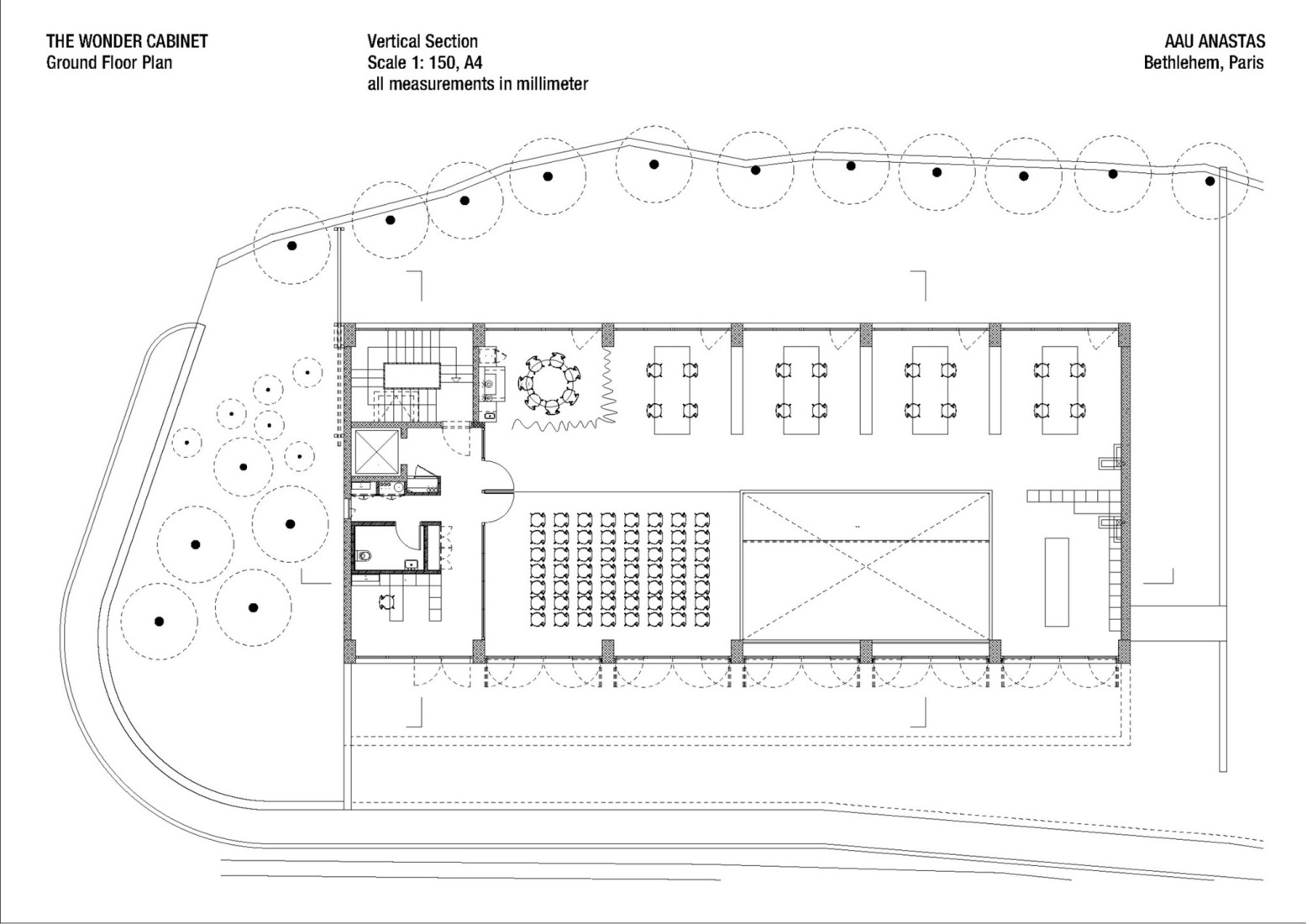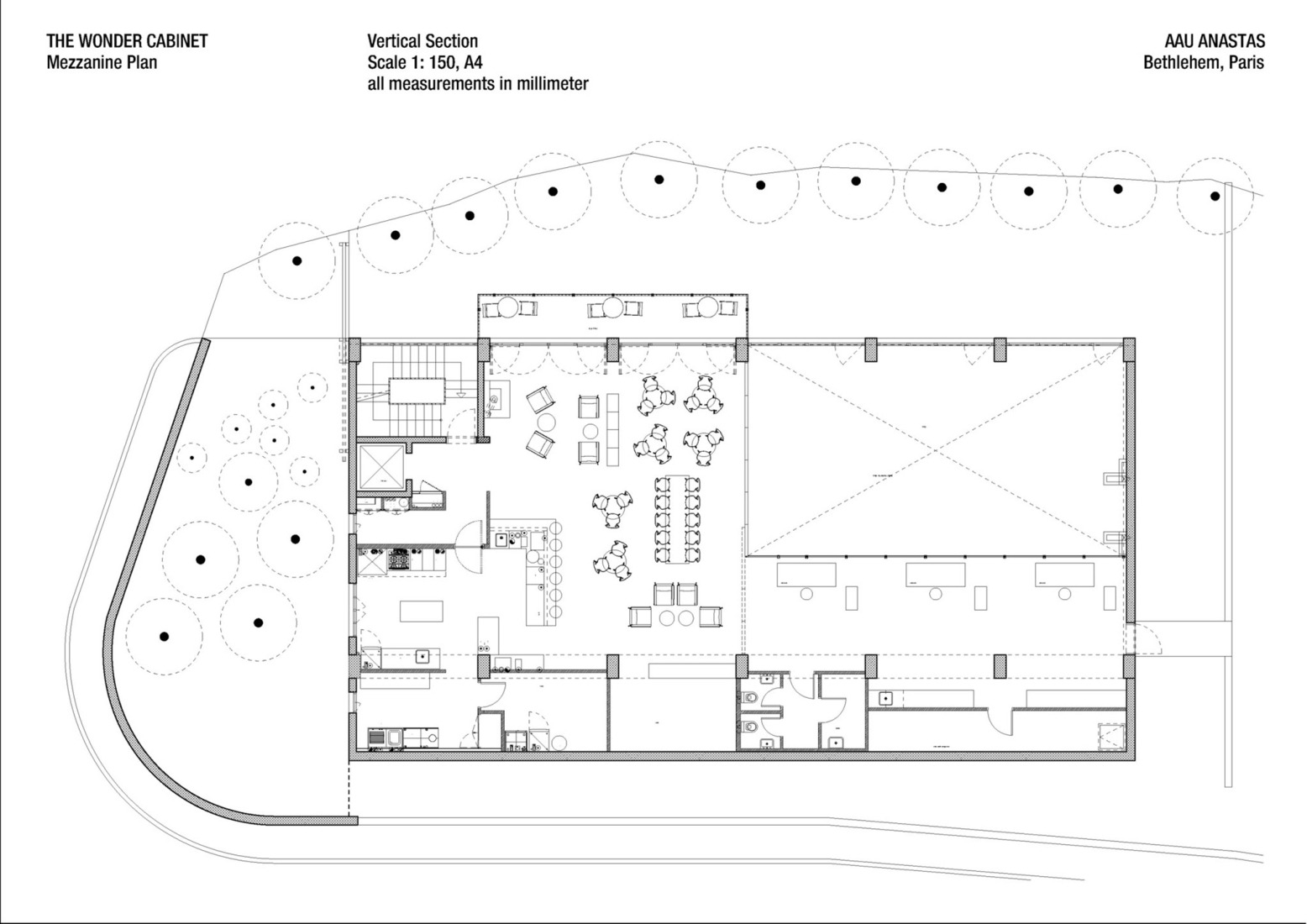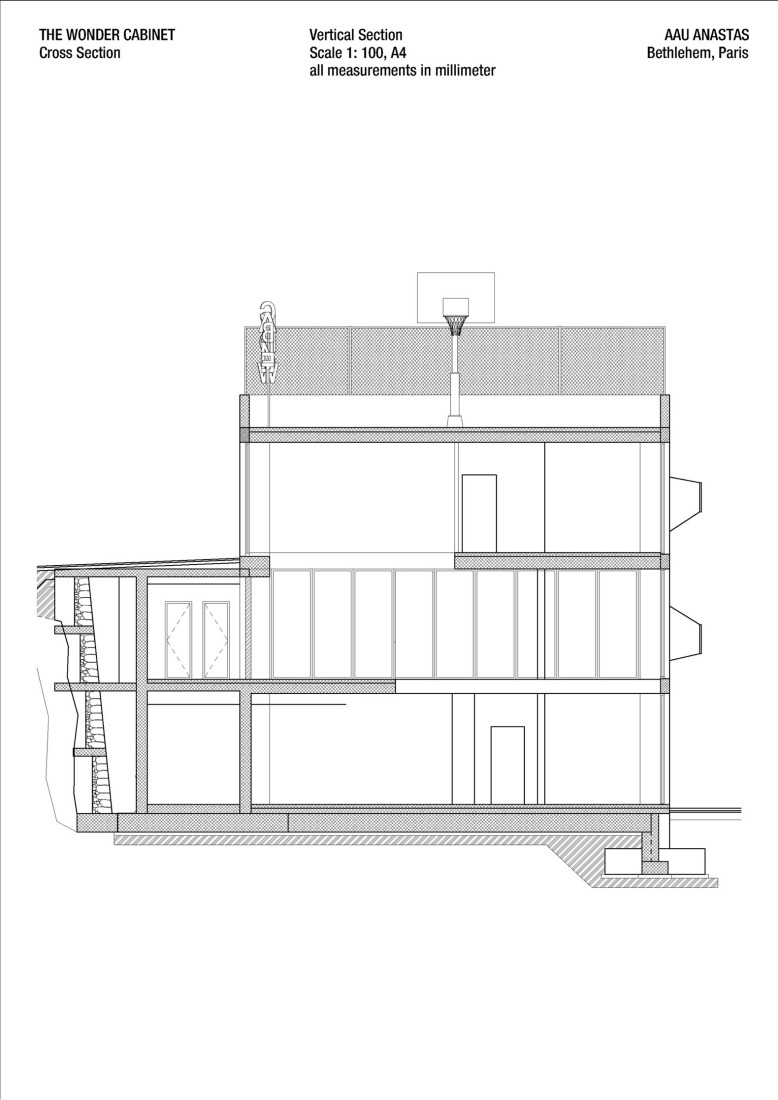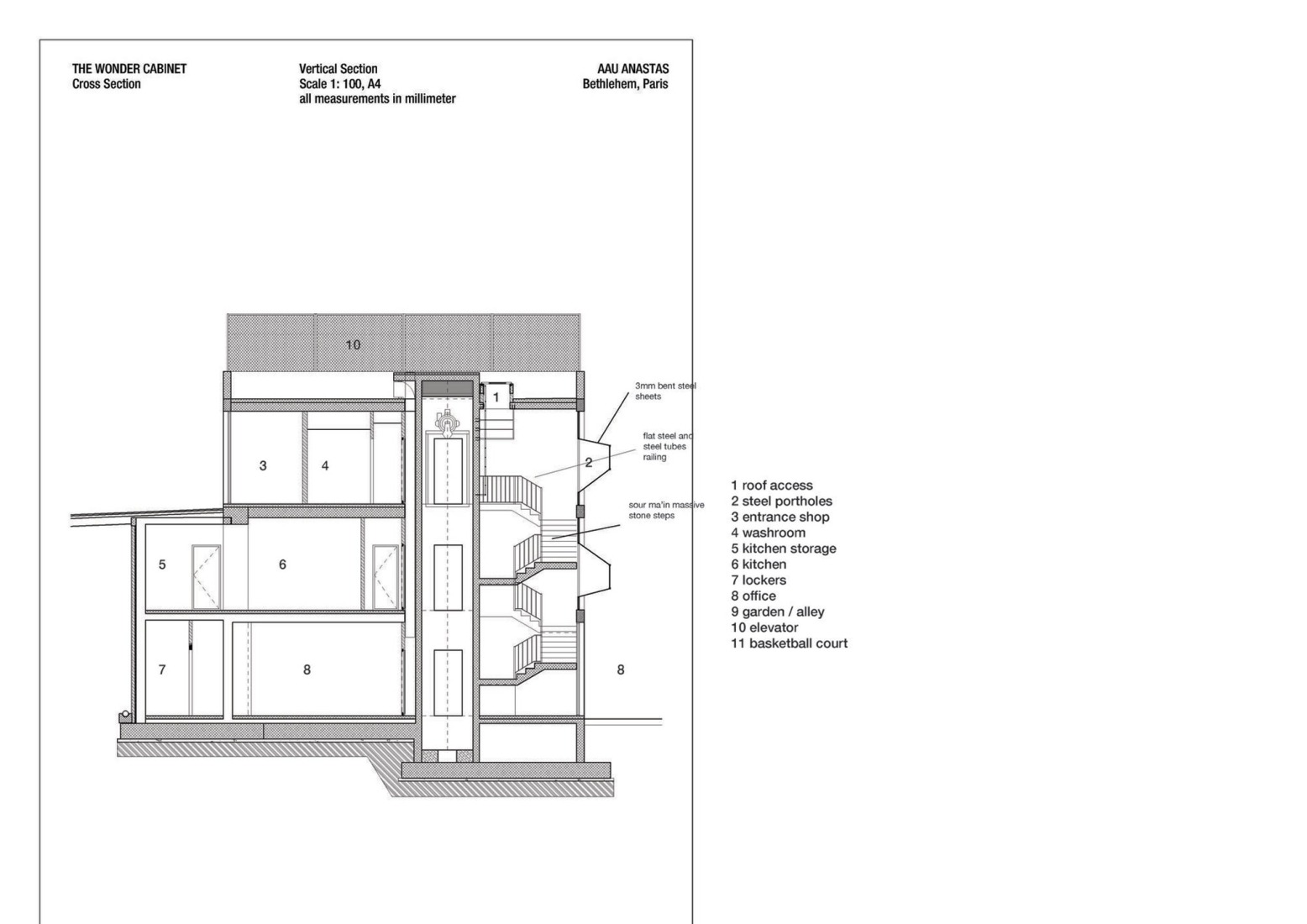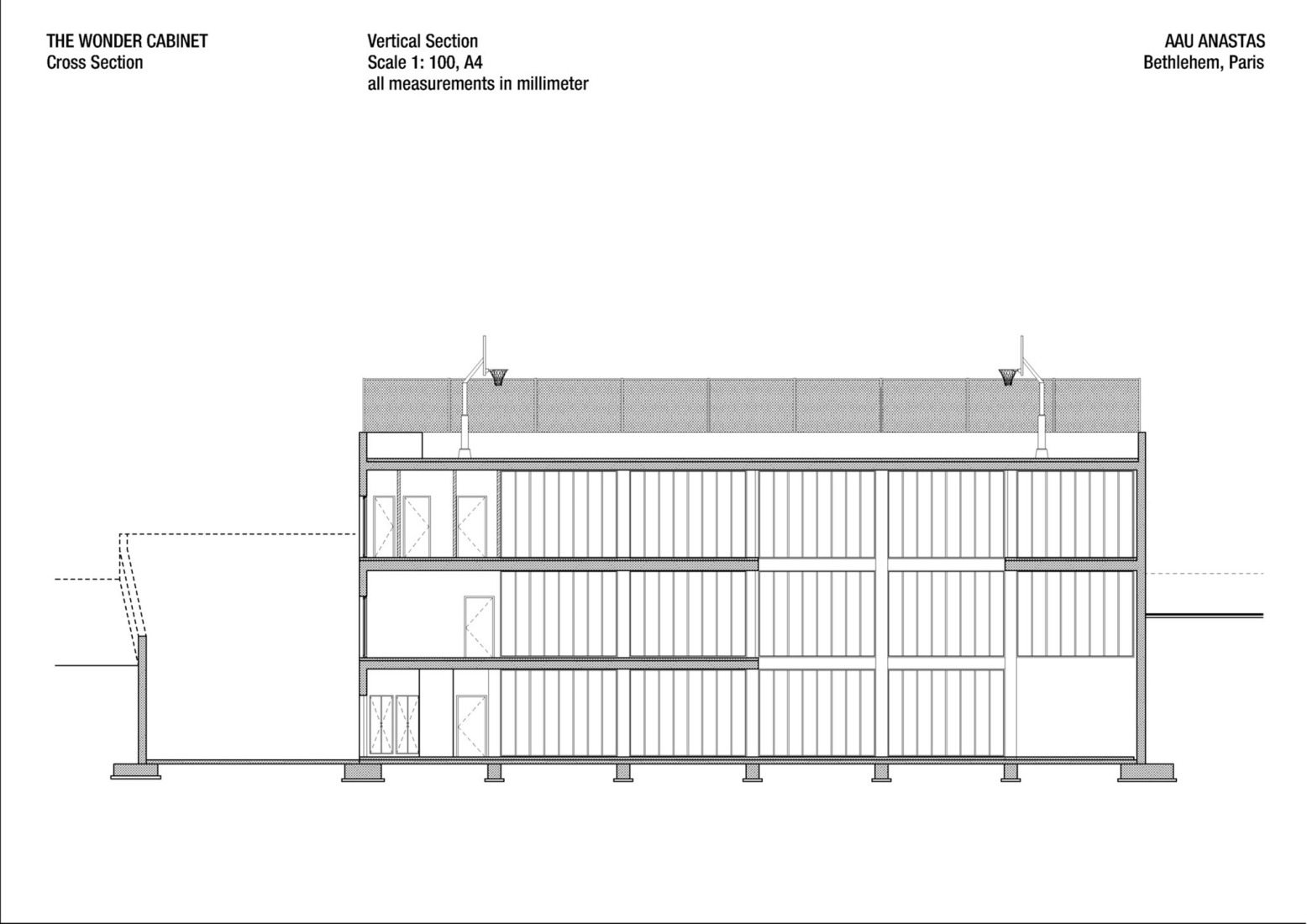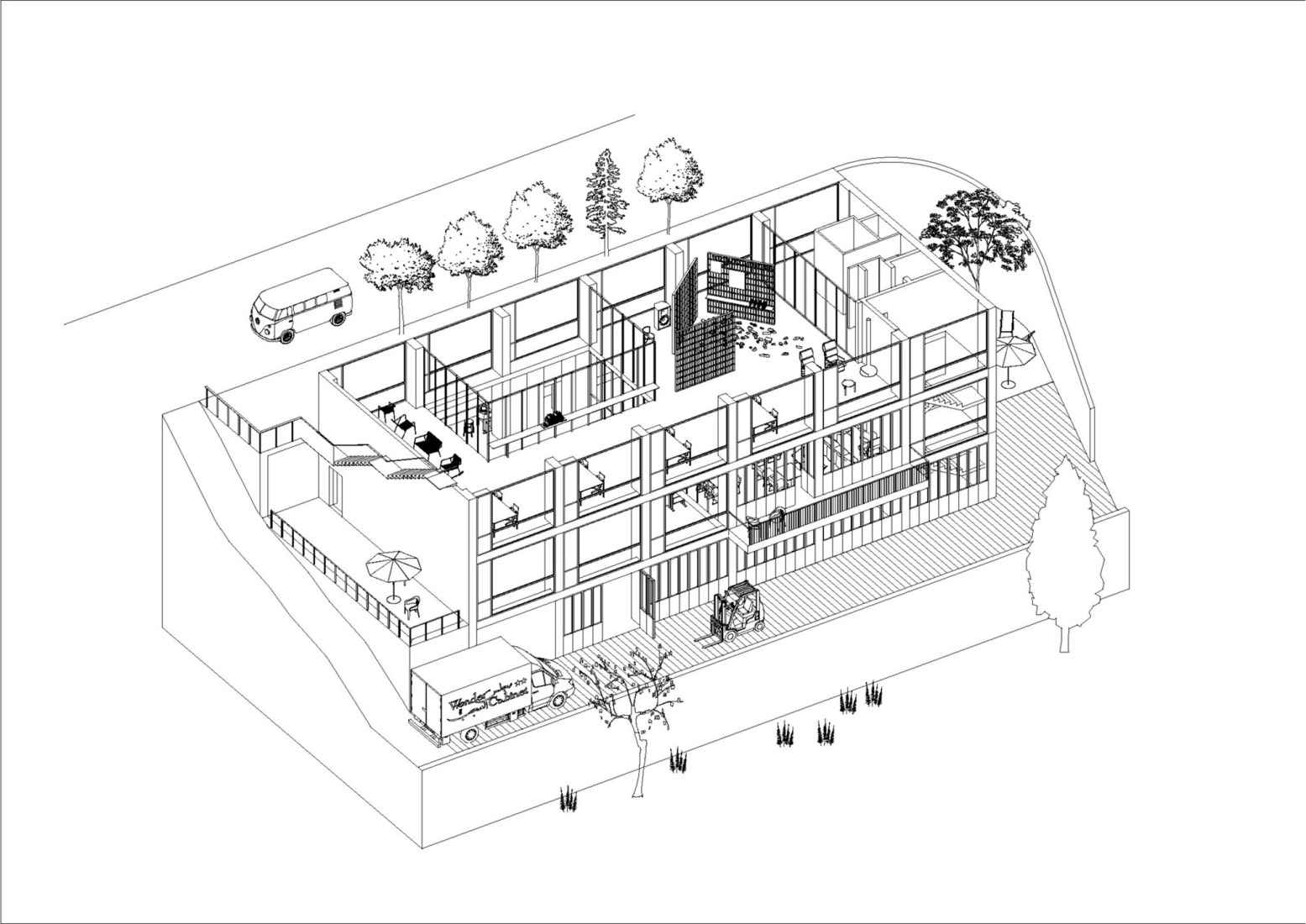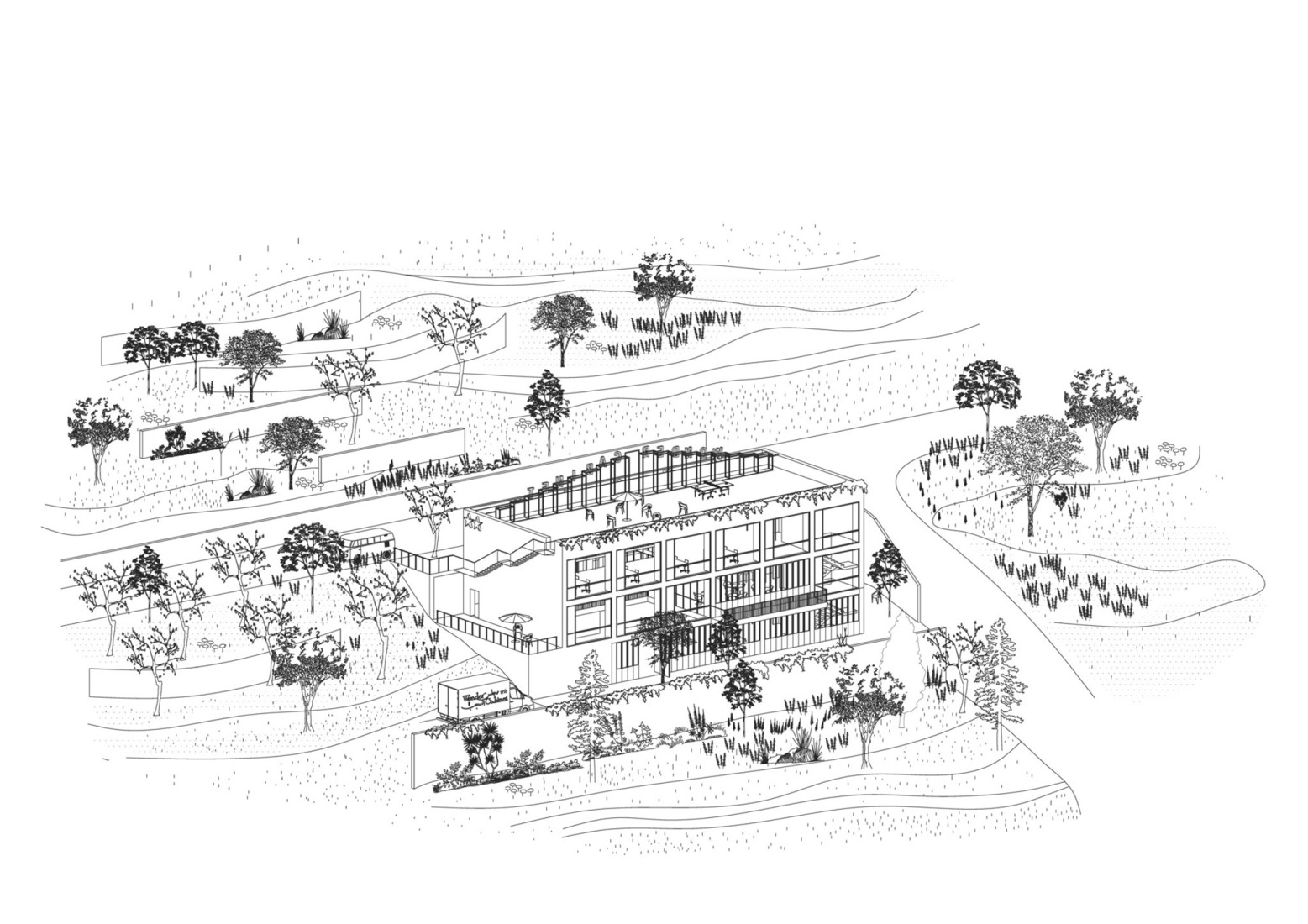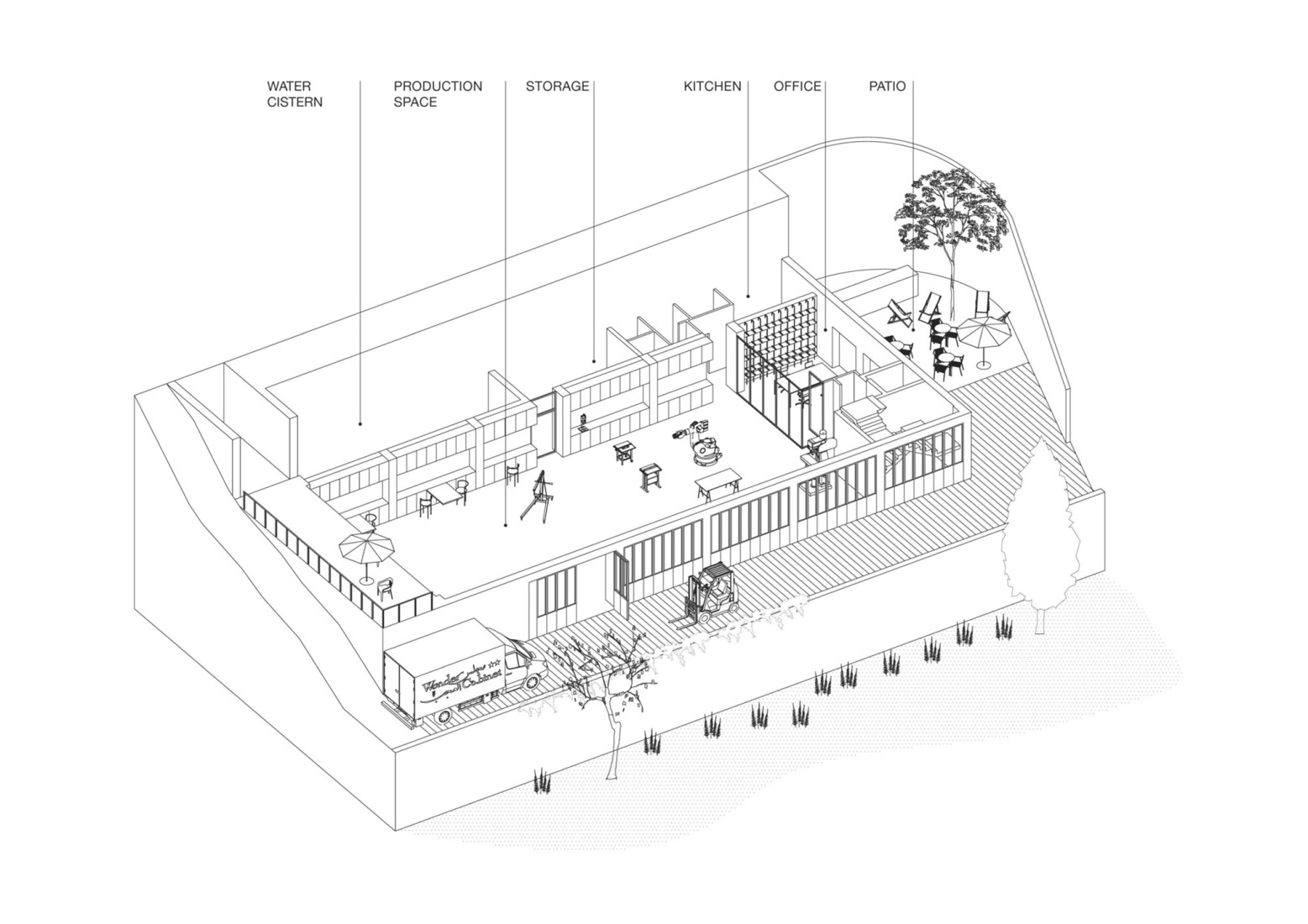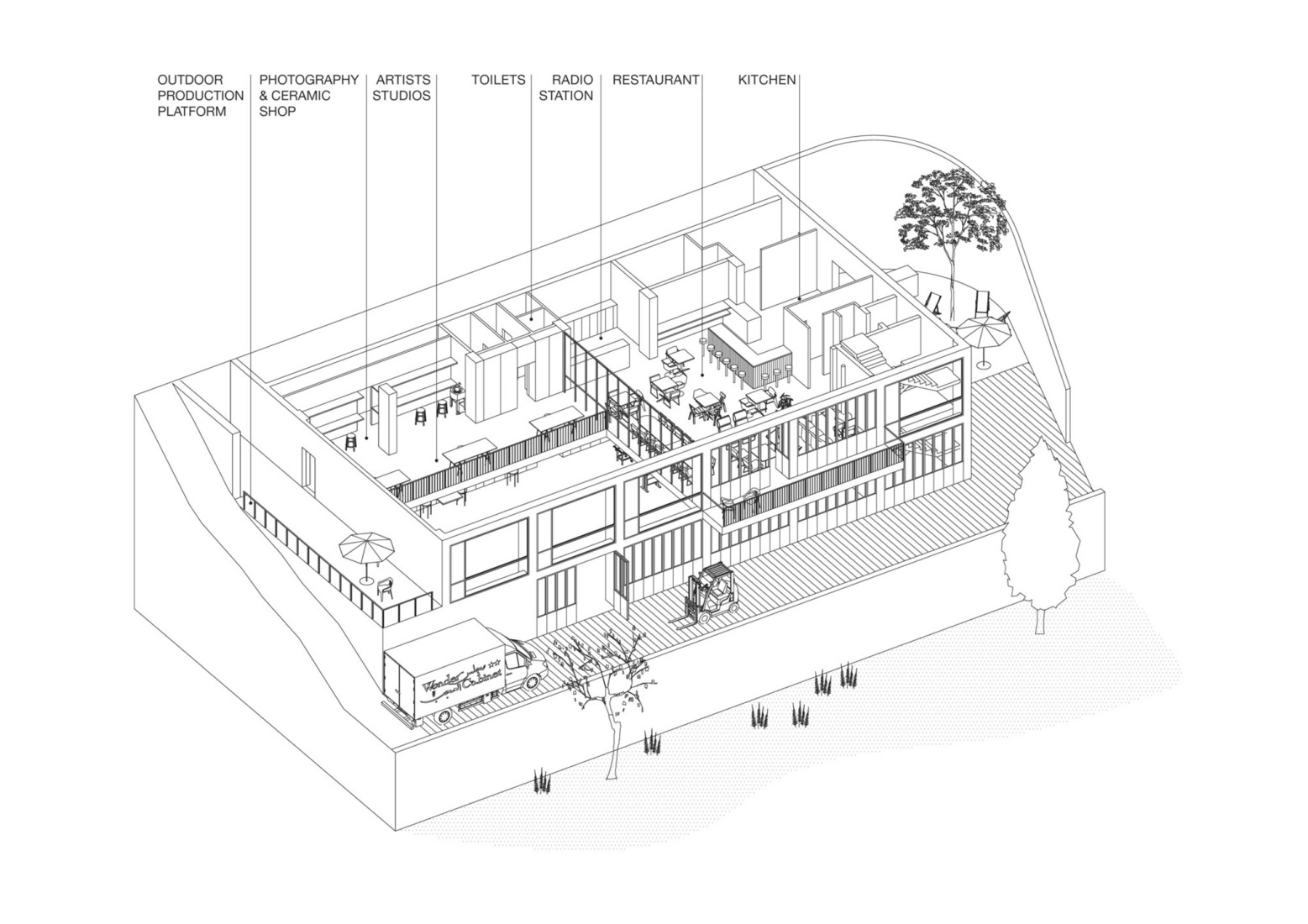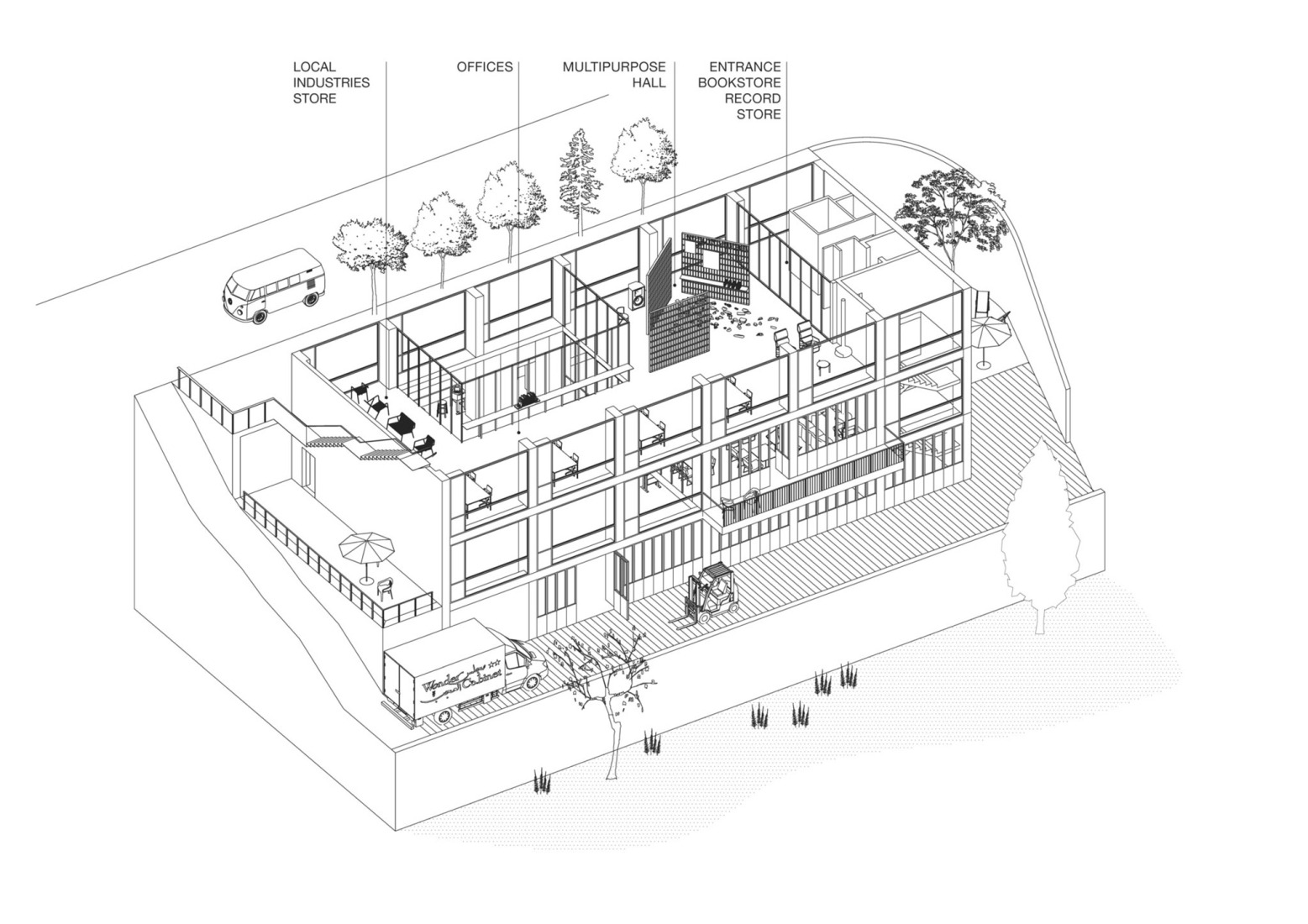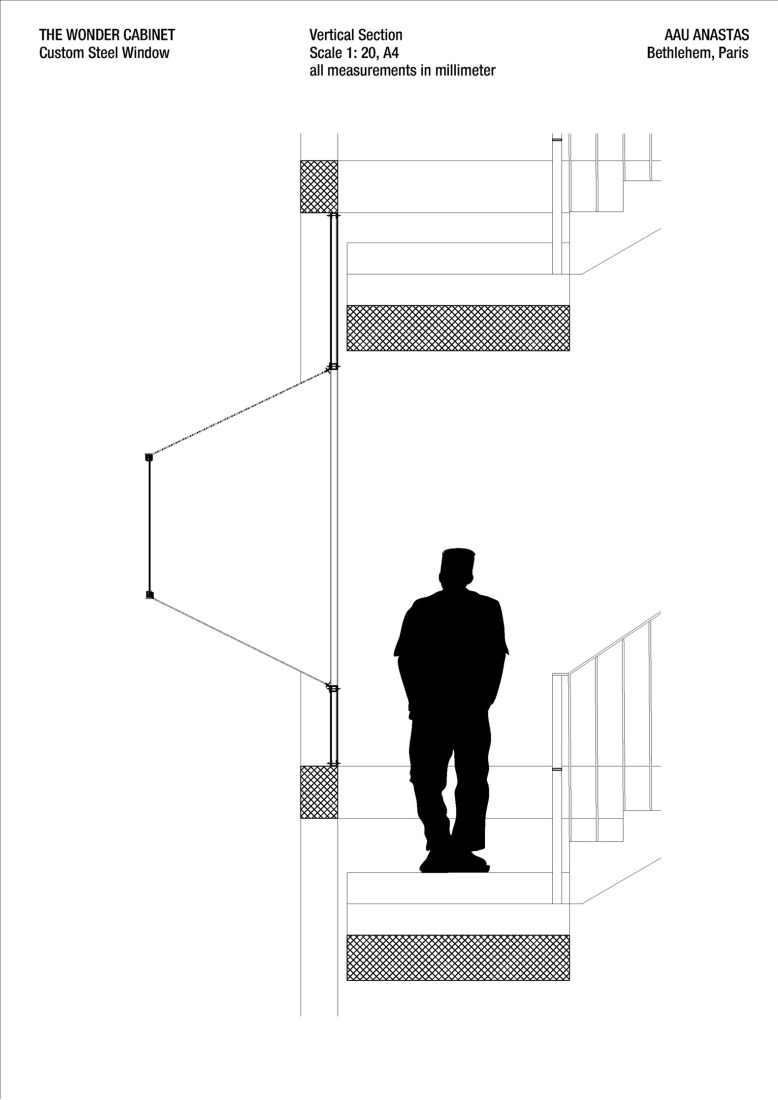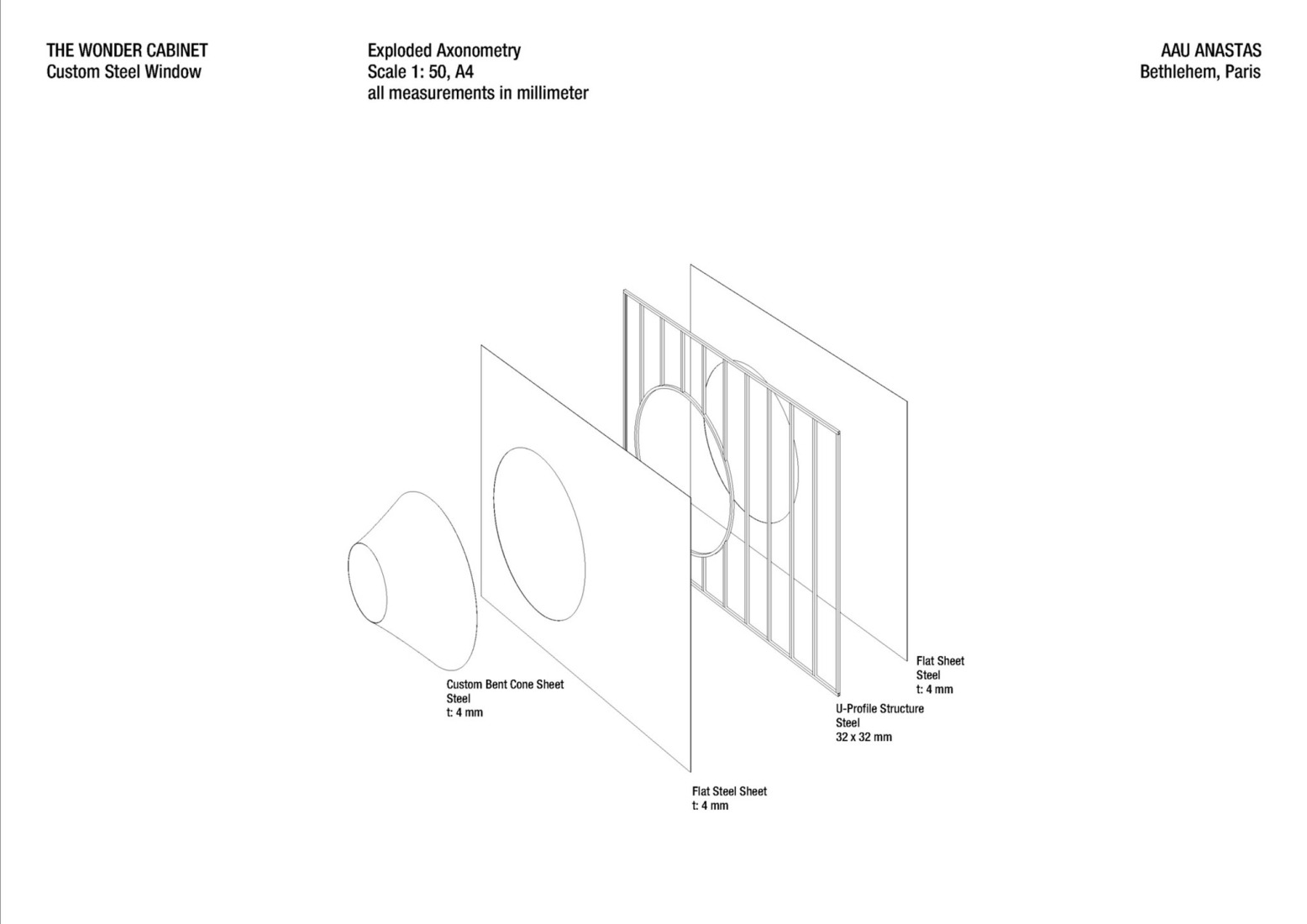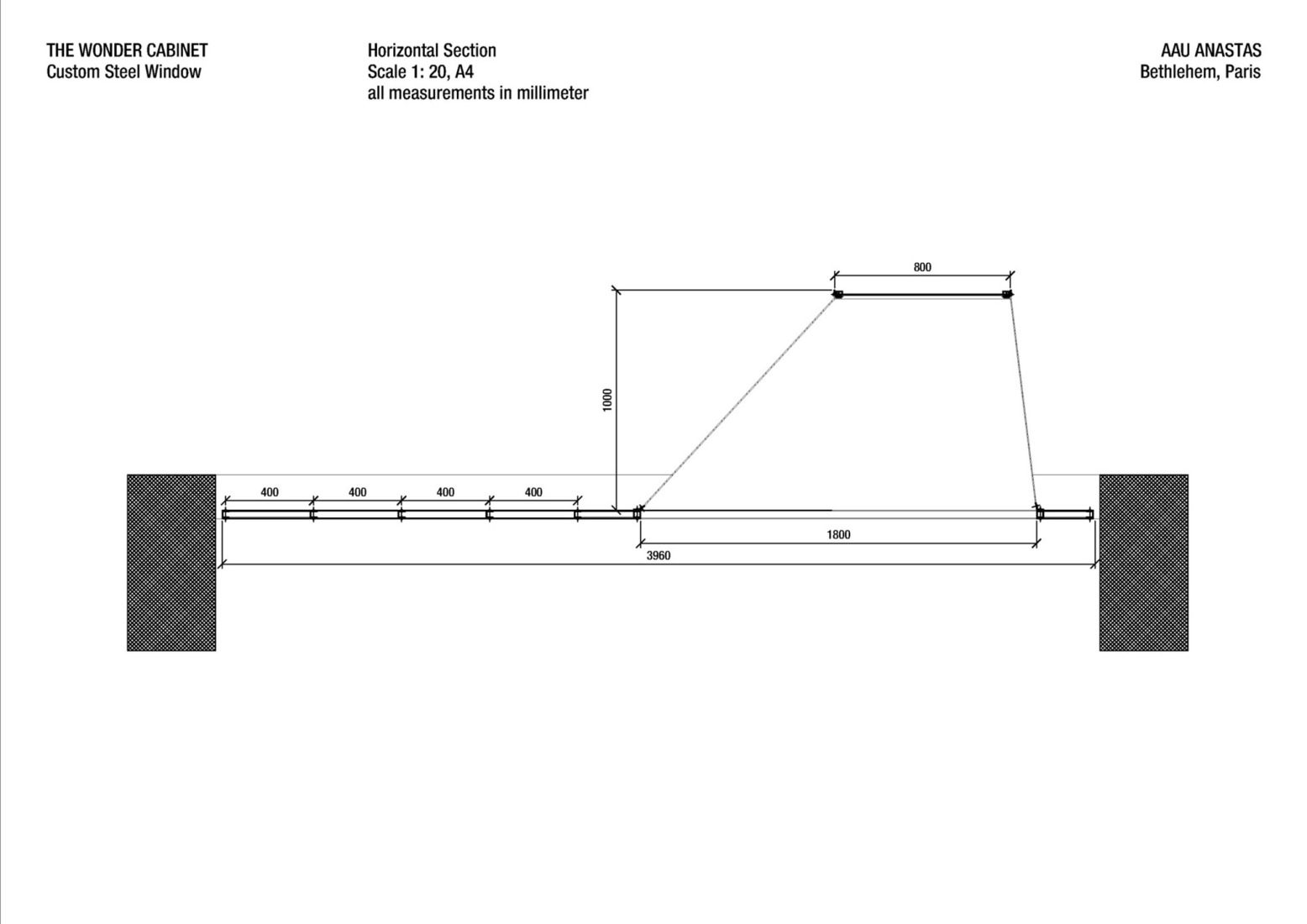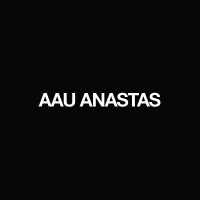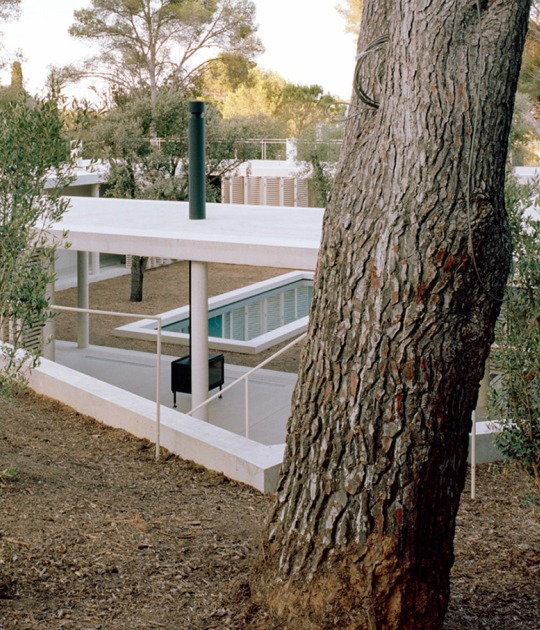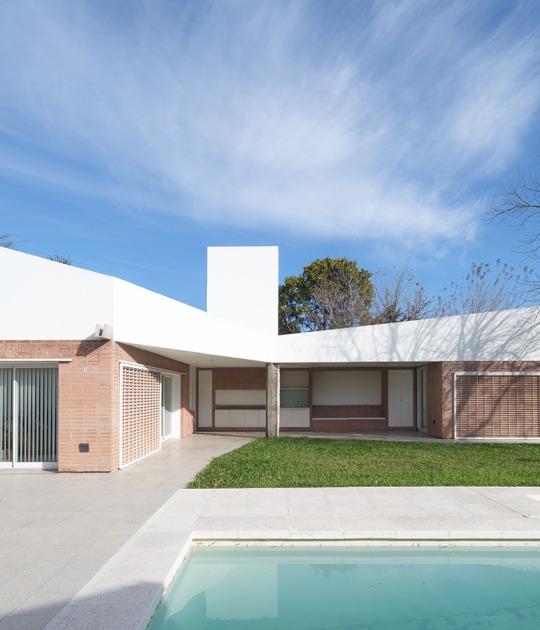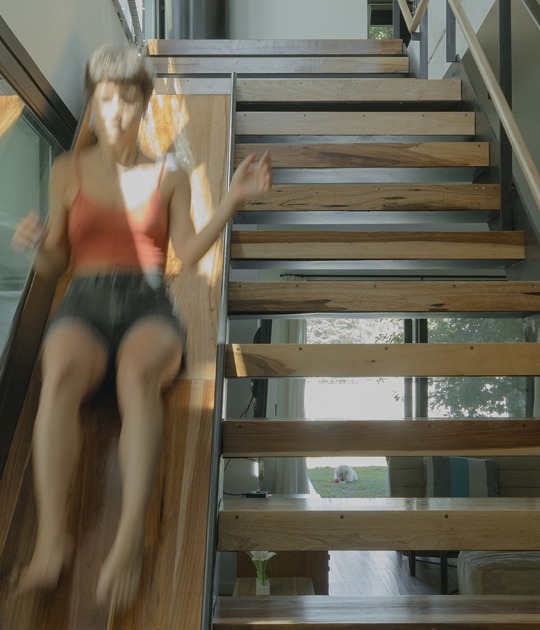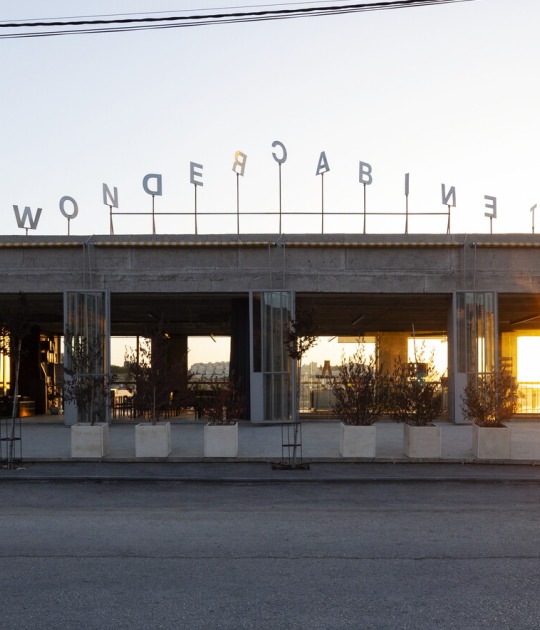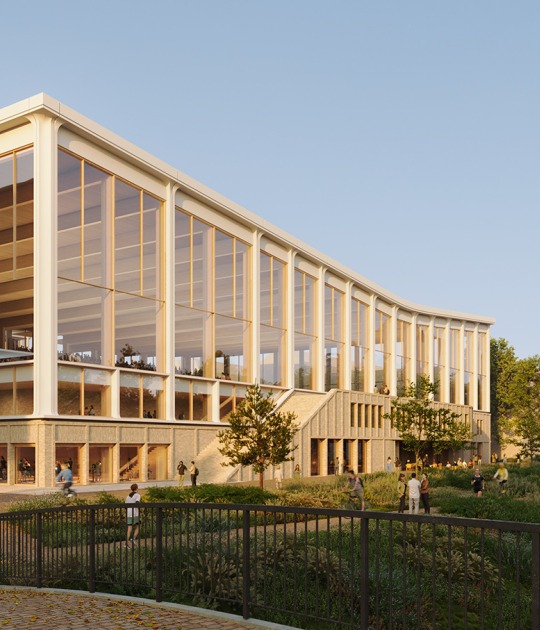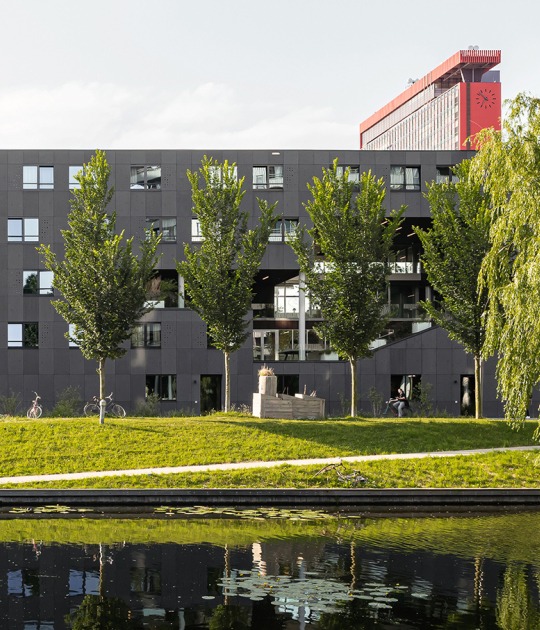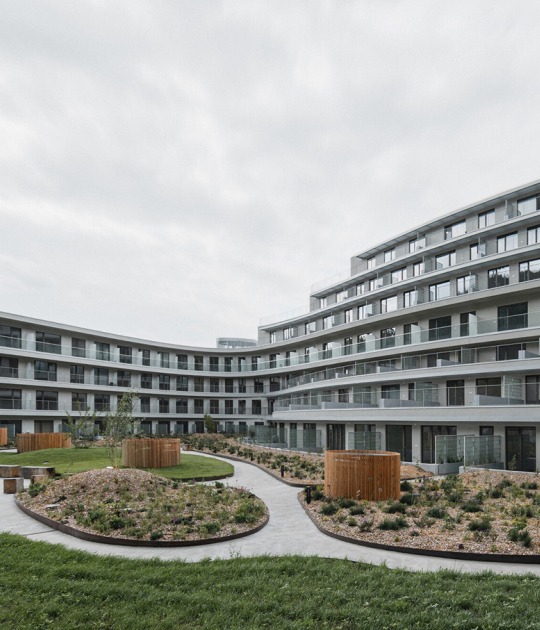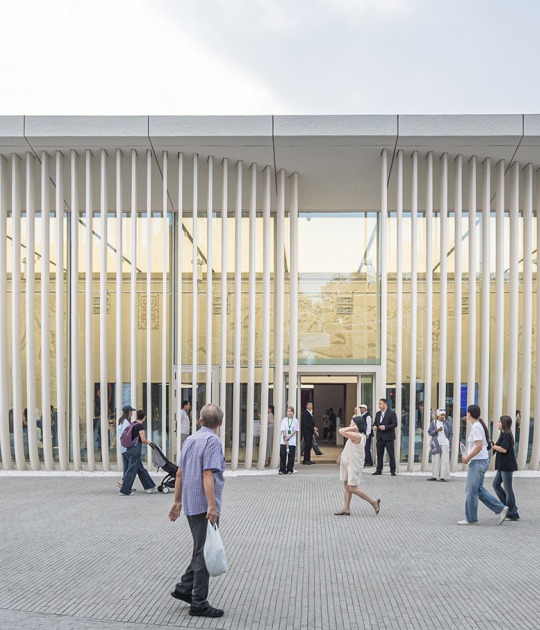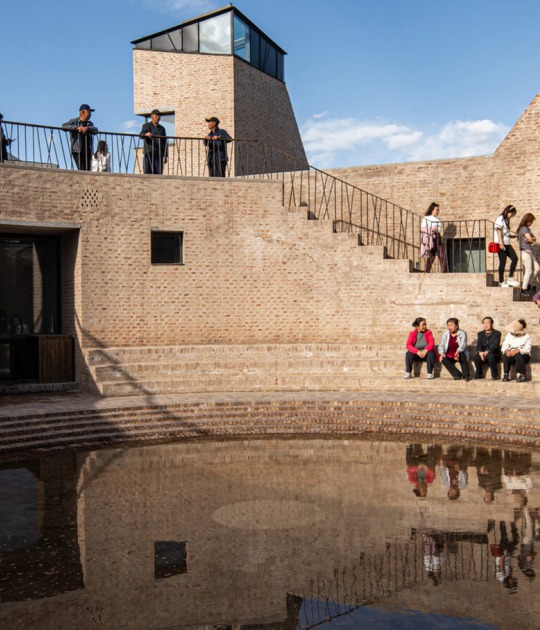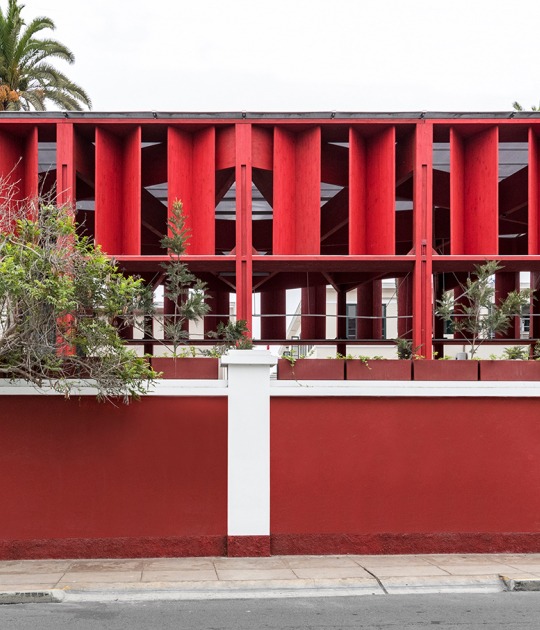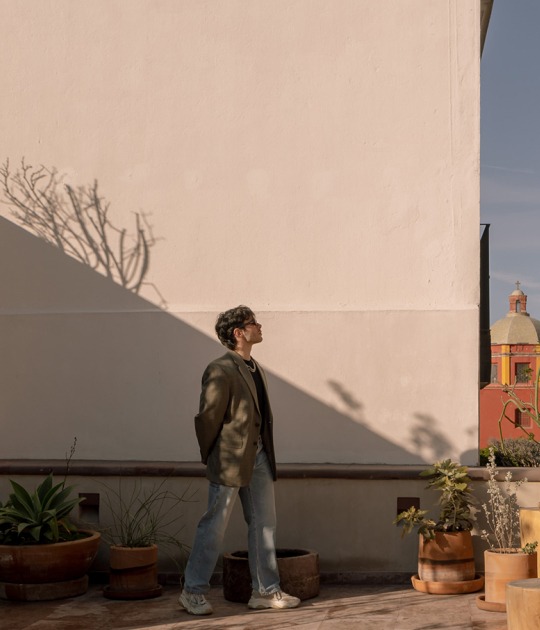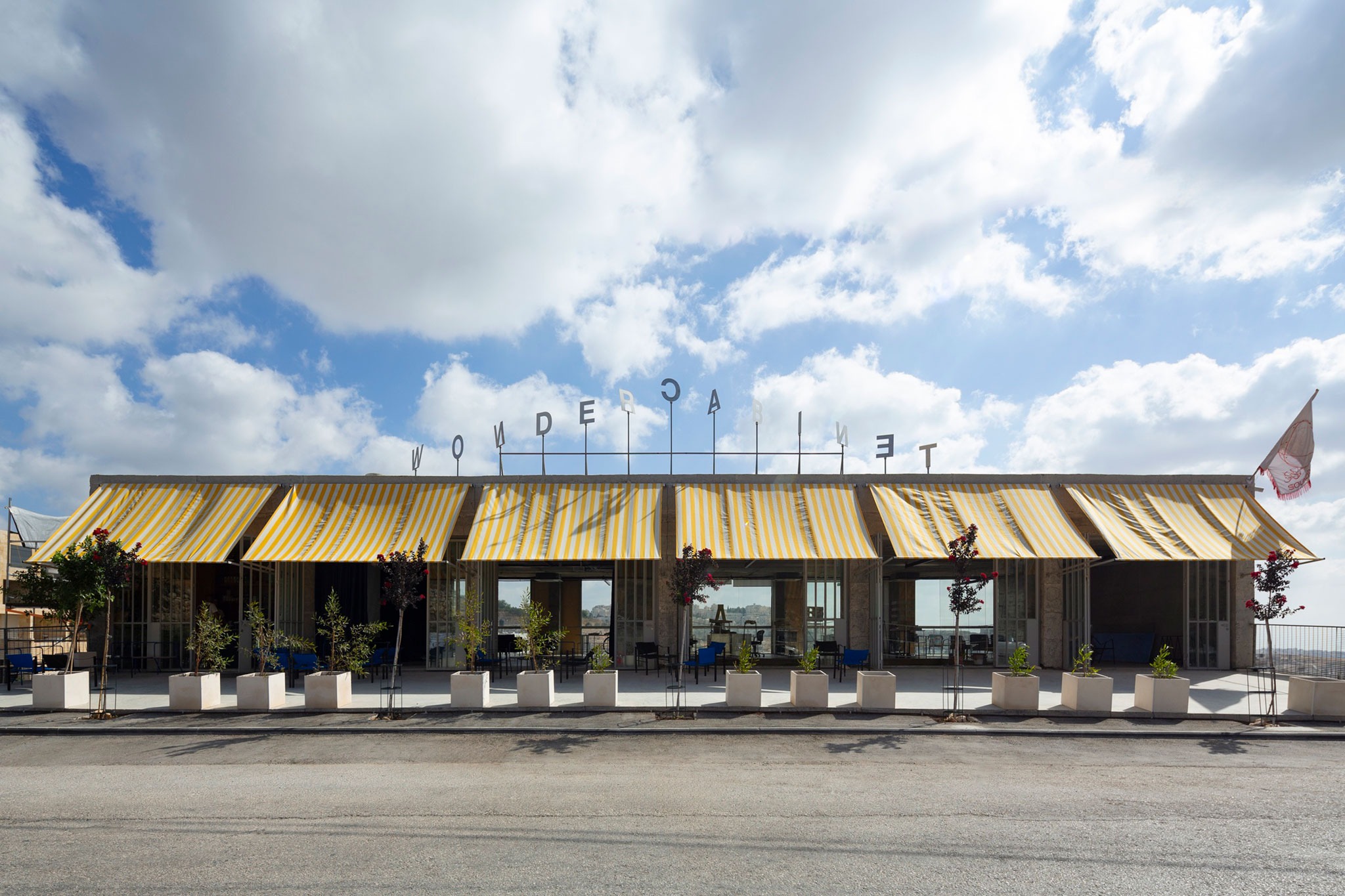
Wonder Cabinet is a non-profit cultural and educational platform founded by local architects Elias and Yousef Anastas. The project strives for material anonymity through the use of a simple, rough-finished concrete grid structure. The glass front and rear facades, with wide opening possibilities, along with a largely open interior with only a few glass partitions, ensure complete transparency and natural air conditioning through ventilation. The focus is entirely on creation, as a means of supporting the livelihoods that sustain the Palestinian presence in the West Bank, and on the landscaped surroundings.
The building combines art, production, and community gatherings. Its west facade features a mural by Somnath Bhatt and Ayed Arafeh. The upper floor houses a café, shop, offices, and an architectural studio; the mezzanine floor houses workshops, a restaurant, and a radio station; and the ground floor houses performance and craft spaces. An outdoor courtyard complements the activities. Metal windows frame the landscape, while furniture and installations, crafted by local artisans, culminate on the rooftop with the work "WONDER CABINET."
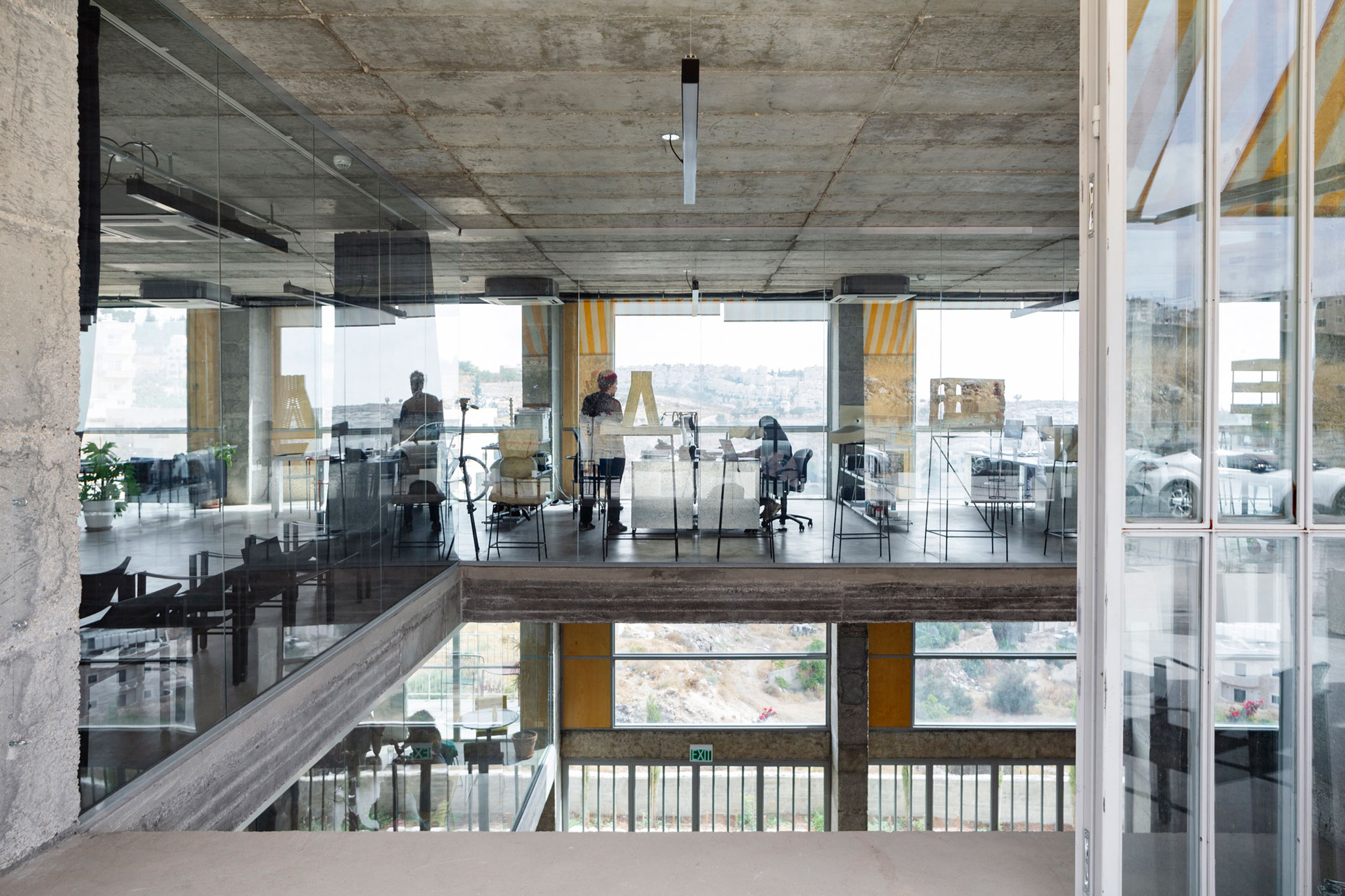
Wonder Cabinet by AAU Anastas. Photography by Mikaela Burstow.
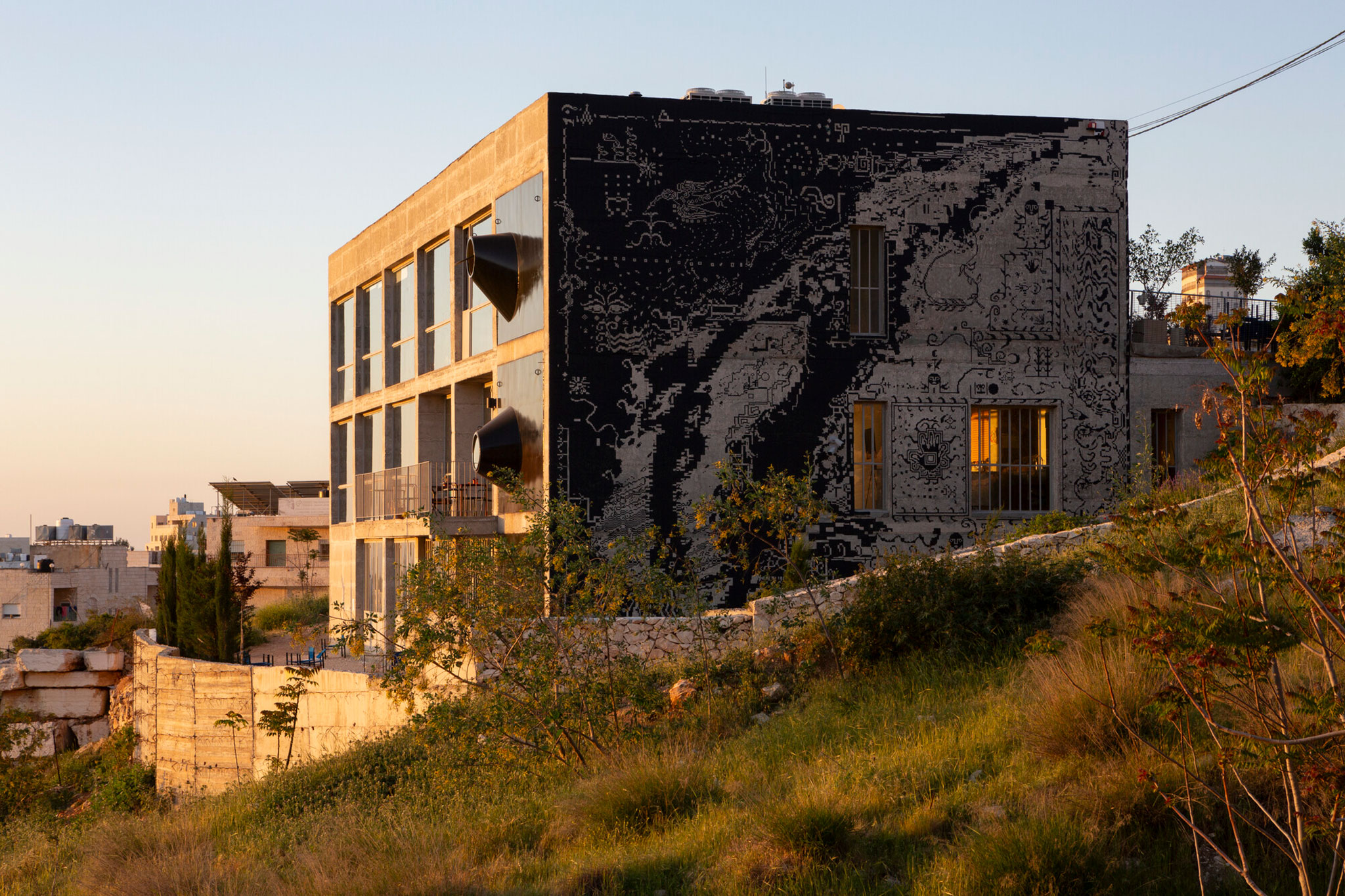
Wonder Cabinet by AAU Anastas. Photography by Mikaela Burstow.
Description of project by AAU Anastas
Exploring and promoting new forms of making based on Palestine’s rich but threatened heritage of both craft and industrial production, the Wonder Cabinet is a non-profit cultural and educational platform established and designed by local architects Elias and Yousef Anastas. Despite being known primarily for their work in stone, they here sought material anonymity by using a simple, rough-finished concrete grid frame. Glazed, extensively openable front and rear facades, along with a largely open-plan interior with just a few glass partitions, ensure transparency throughout and natural climate control through airflow. The focus is entirely on the making, as a means to support fulfilling livelihoods that sustain Palestinians’ presence here in the West Bank, and on the landscape setting.
Nestled into a hillside at the edge of Bethlehem – a city that previously lacked any dedicated contemporary arts venue – the building looks out over the Al-Karkafeh Valley. Its views towards the Jordanian mountains on the horizon are interrupted by an Israeli settlement on a once-forested hilltop in the near distance.

A giant mural by the artists Somnath Bhatt and Ayed Arafeh adorns its west elevation. The street facade gives access to the upper level, housing a café and a shop showcasing locally made products. Between the two, a diagonal void that cuts through and connects all three levels draws the gaze downwards, offering a sweeping perspective of the multiple activities taking place inside, and on to the valley beyond.
The architects’ studio and several other open offices are also accommodated on the upper floor. The mezzanine below hosts a production area, artist workstations, a radio station, and a restaurant. The lower level mainly houses a performance and production space, with facilities for various craft activities, from wood- and metalworking to casting, textiles, and photography. An outdoor patio offers a relaxed spot for socialising or informal meetings.
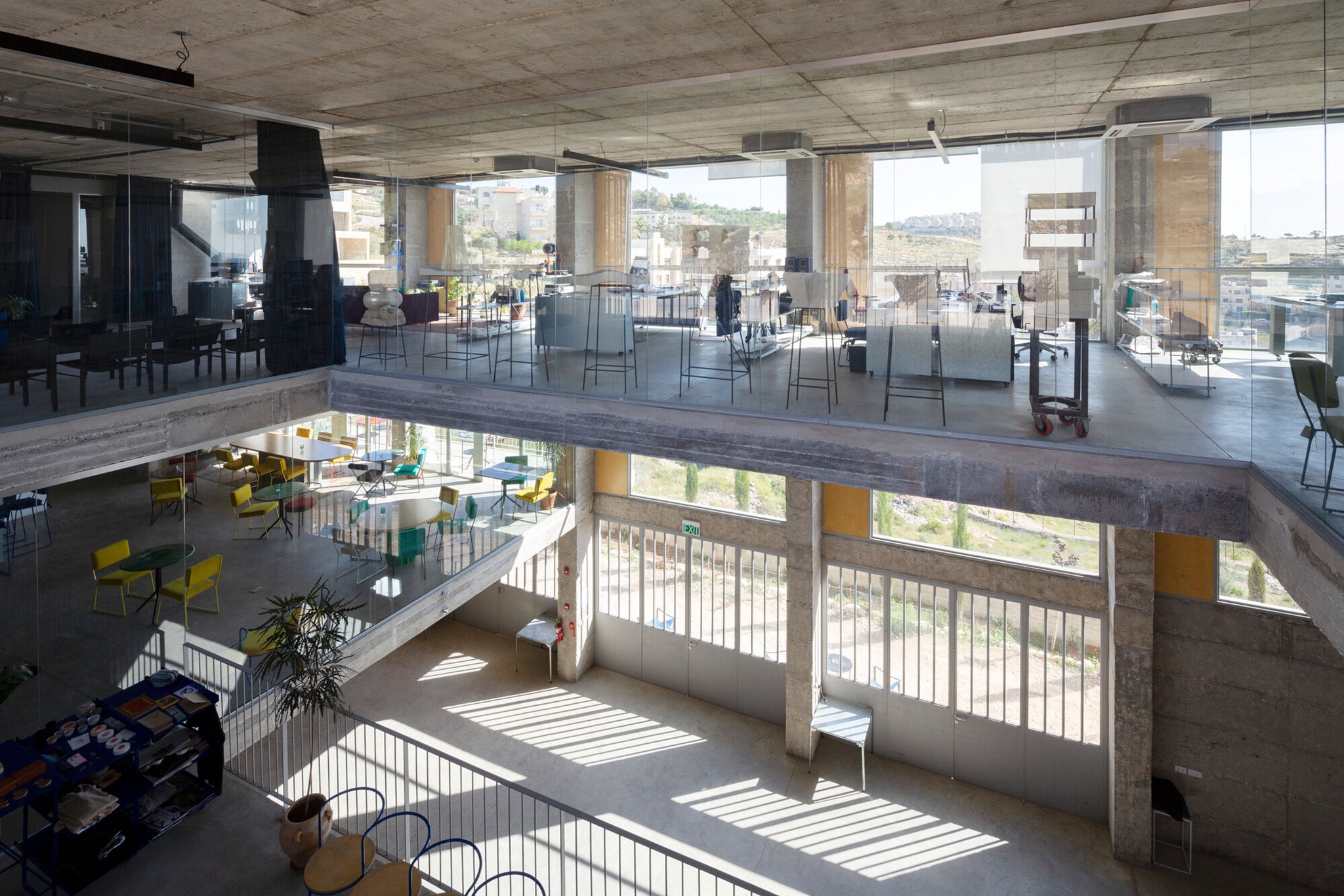
The only enclosed areas of the rear facade are the masonry-walled sound studio and the metal-fronted staircase bay, which has two conical protruding porthole windows. Crafted by Mohammad Husni, who specialises in steelwork for factory silos, these windows are angled to frame particular parts of the surrounding landscape. Furniture, lighting, and other details are likewise made by local artisans, including the prominent rooftop installation by Bishara al-Hadweh, of staggered stainless-steel letters spelling out “WONDER CABINET” that gently spin – weather-vane-like – on tailor-made ball-bearing mechanisms.
